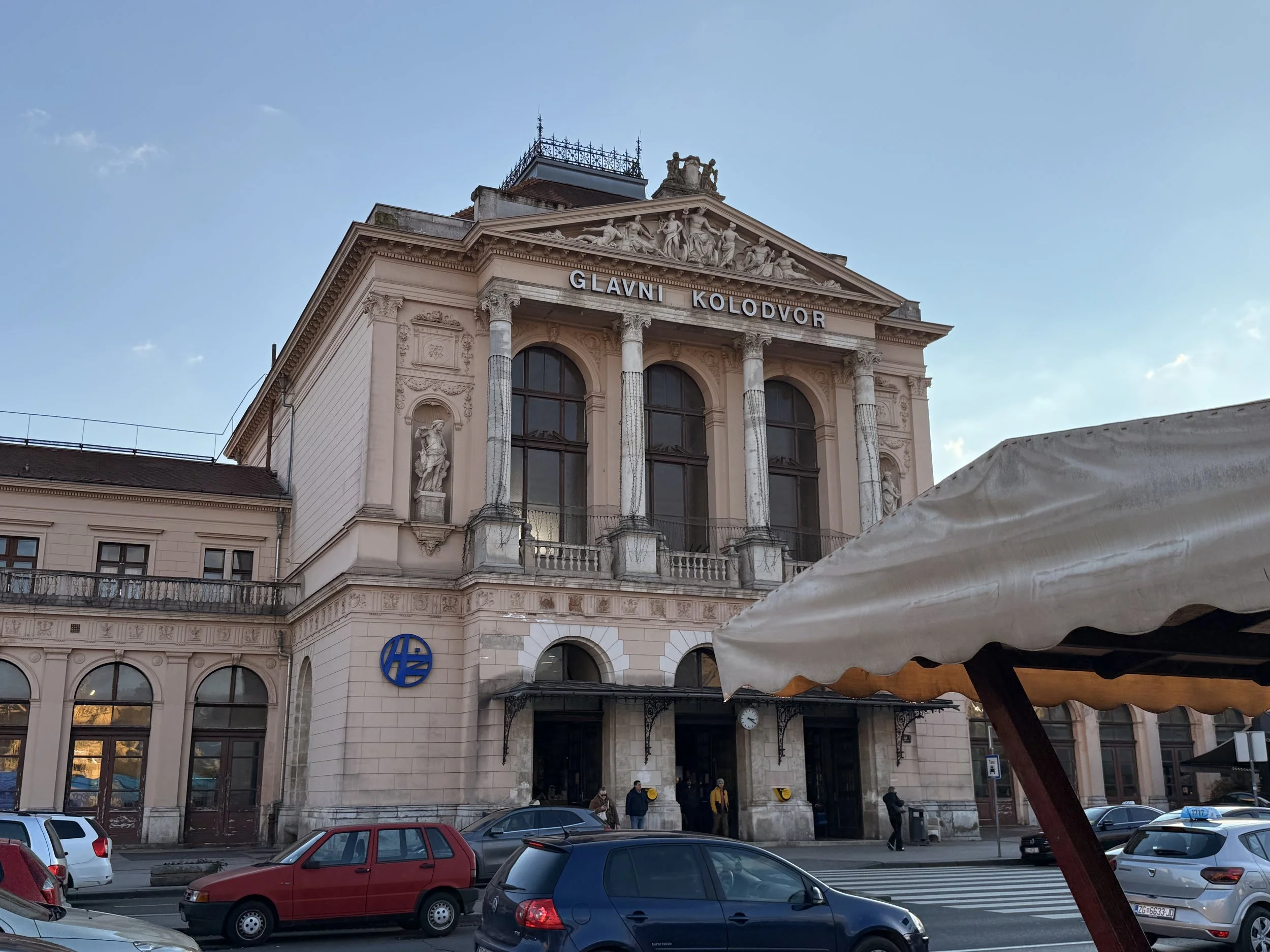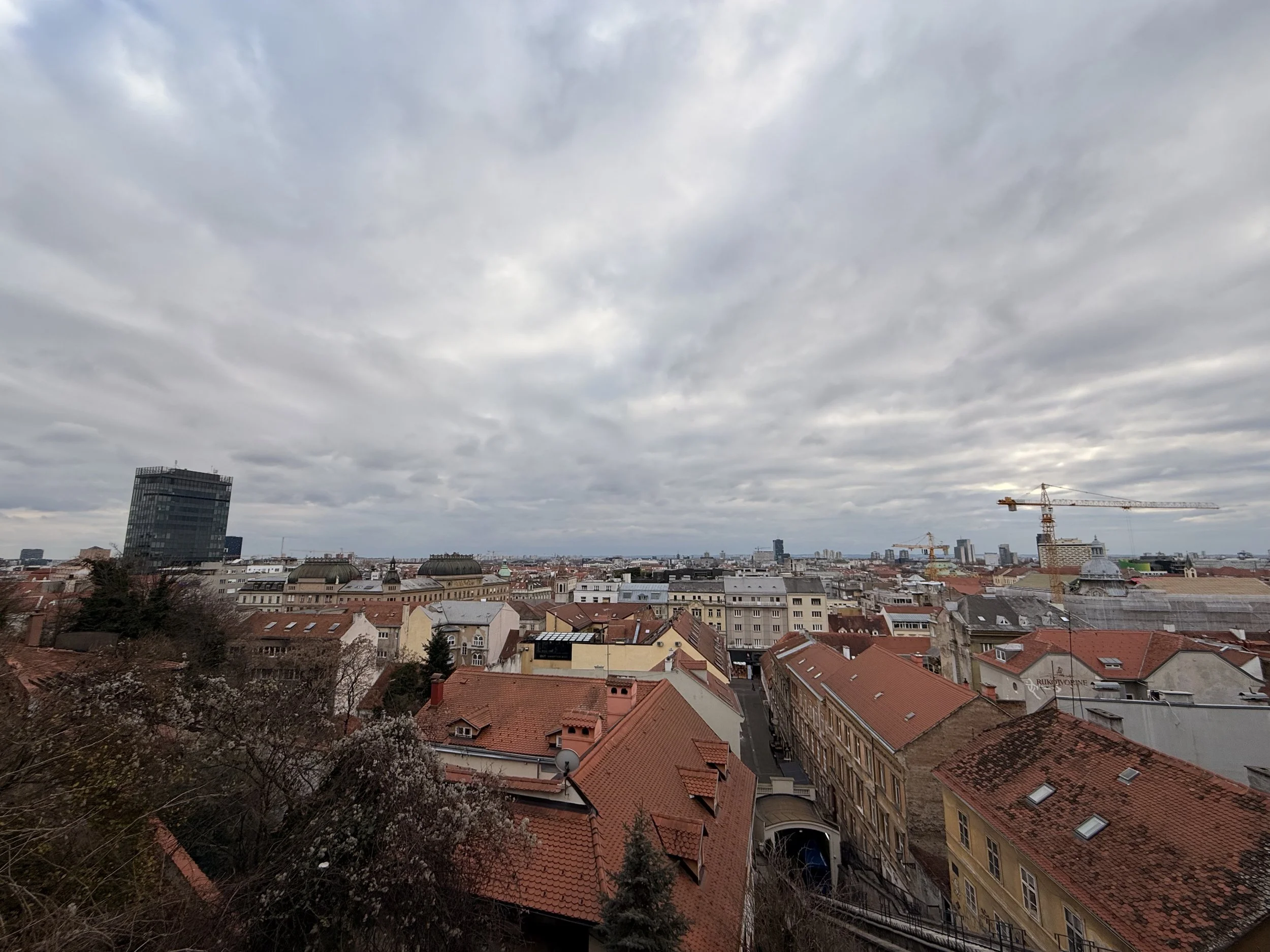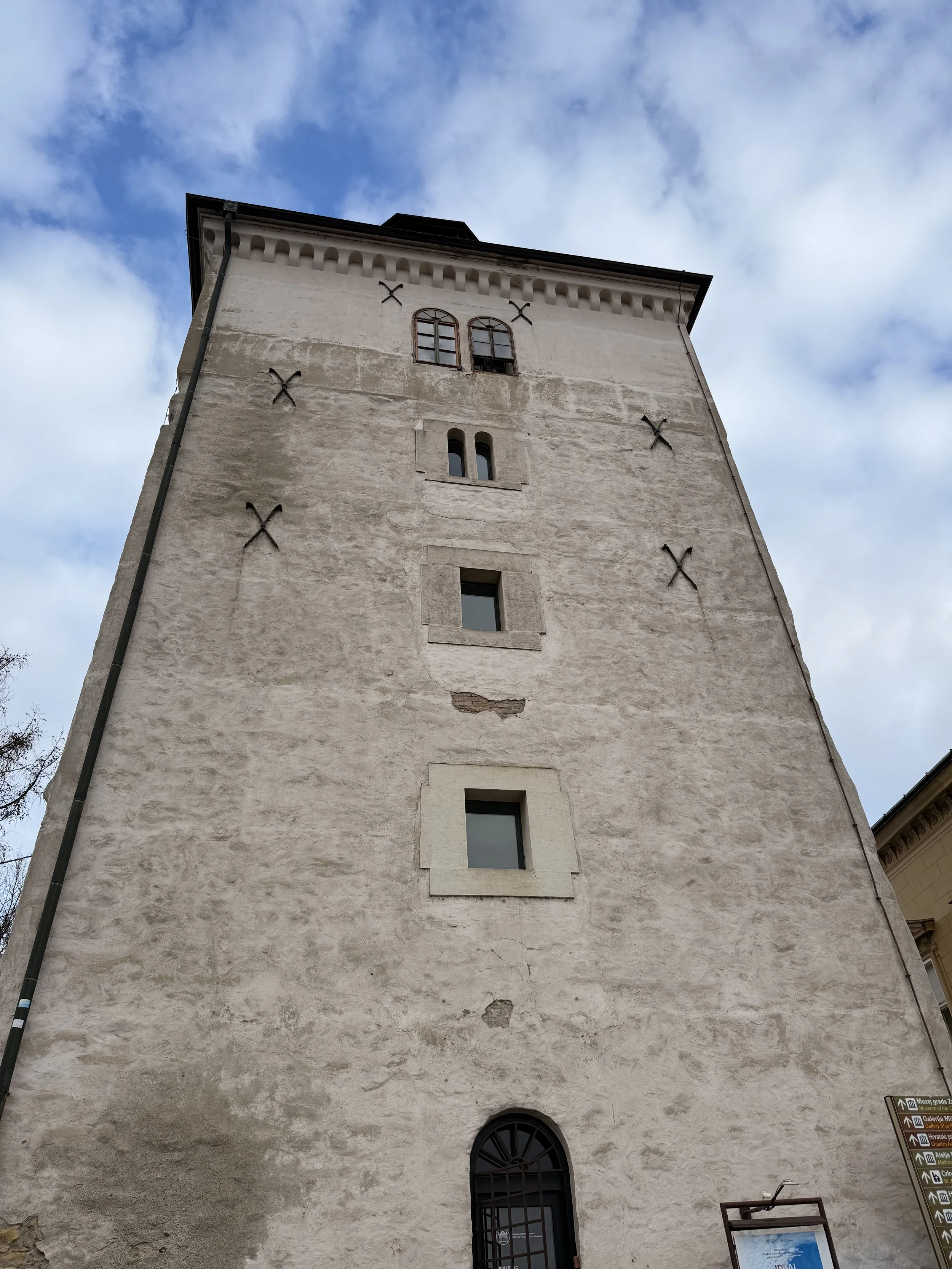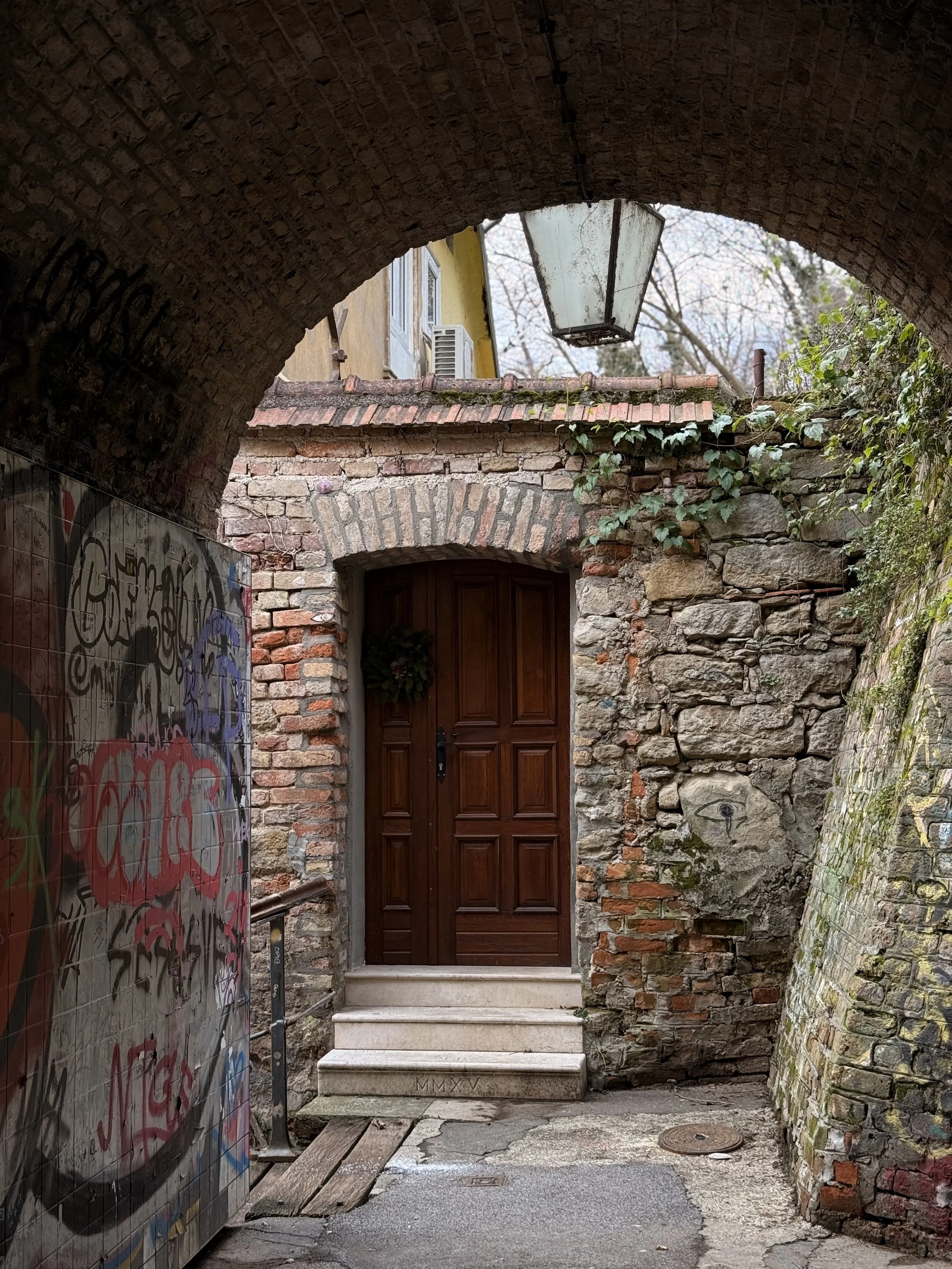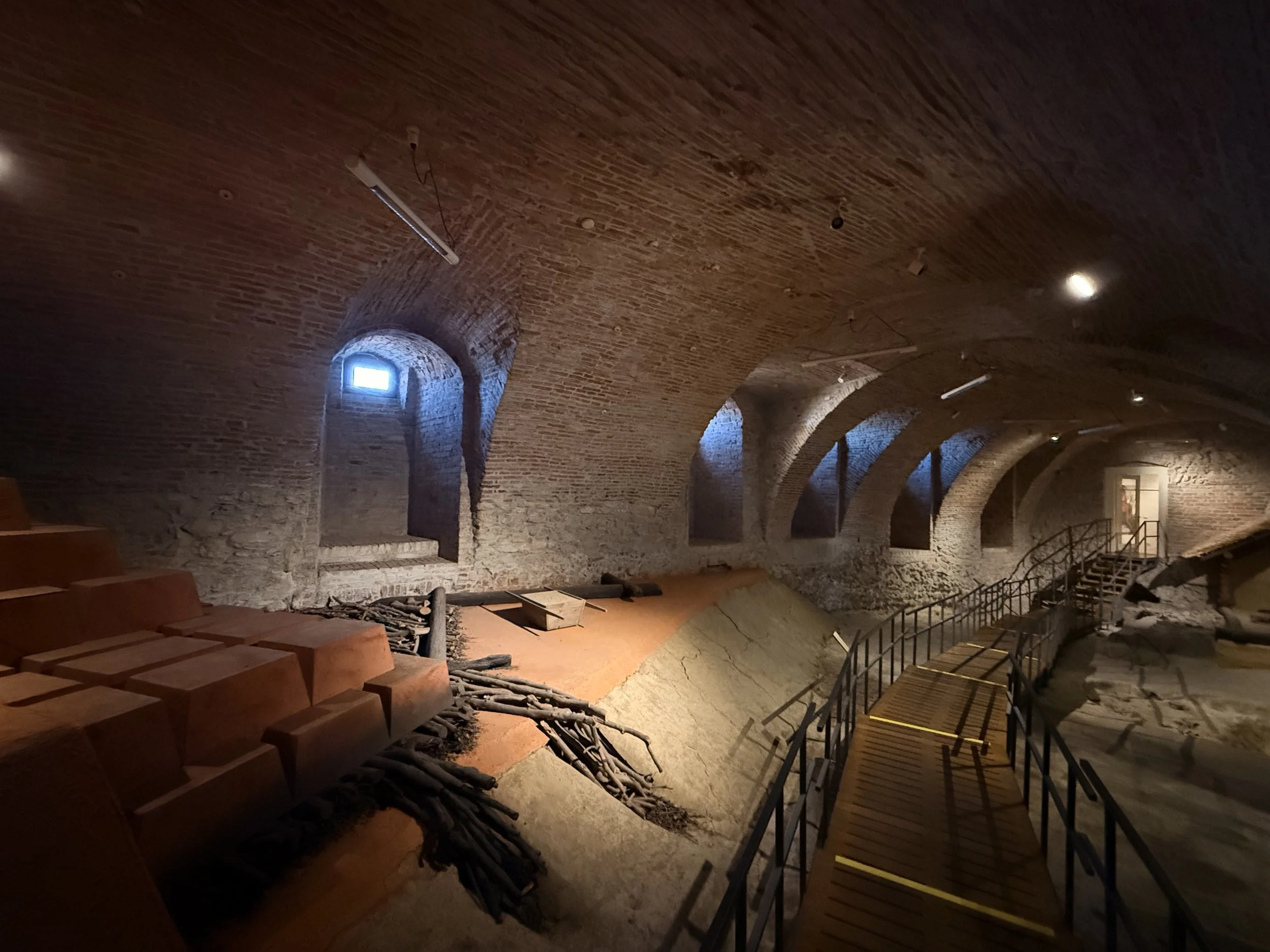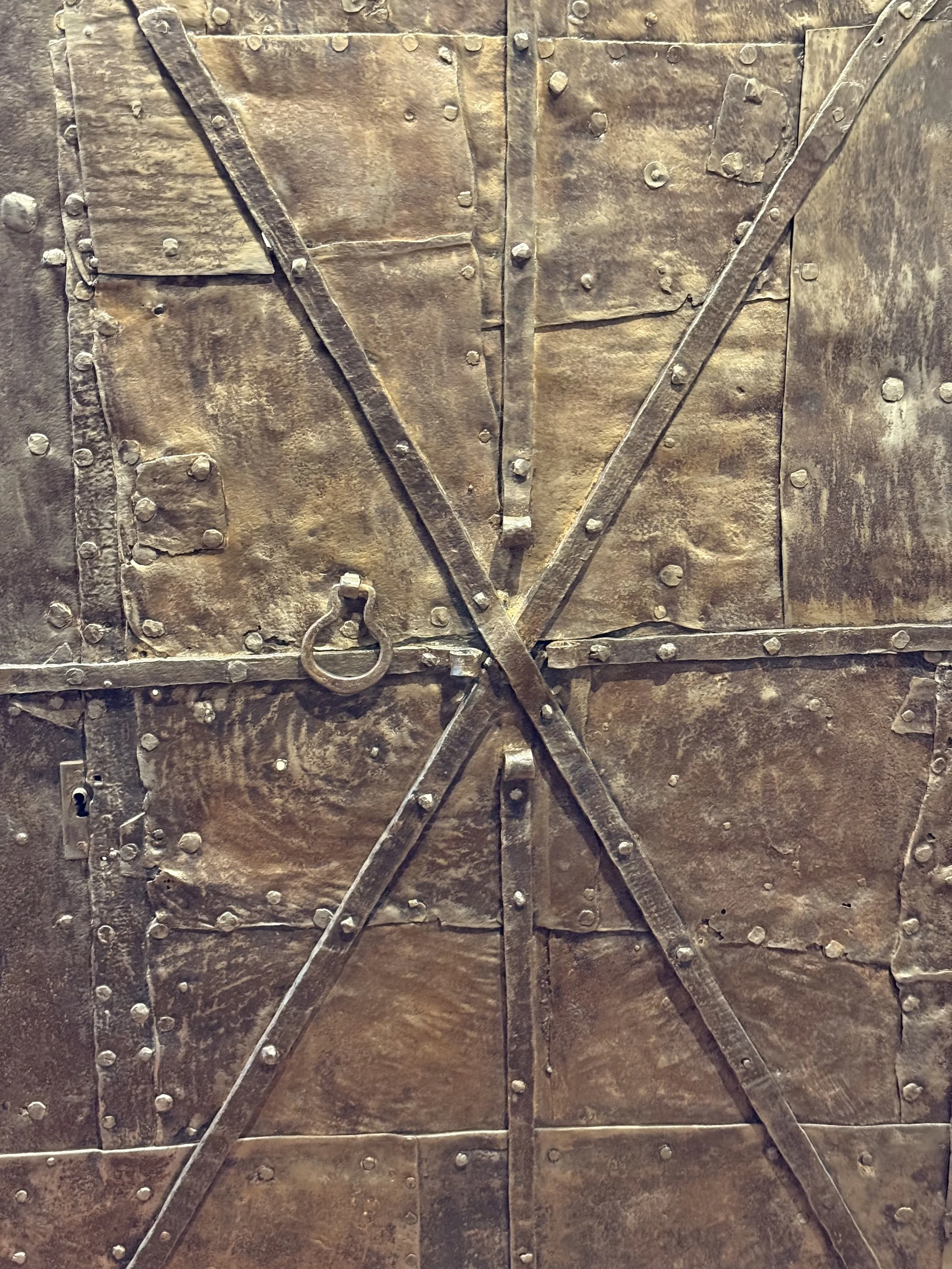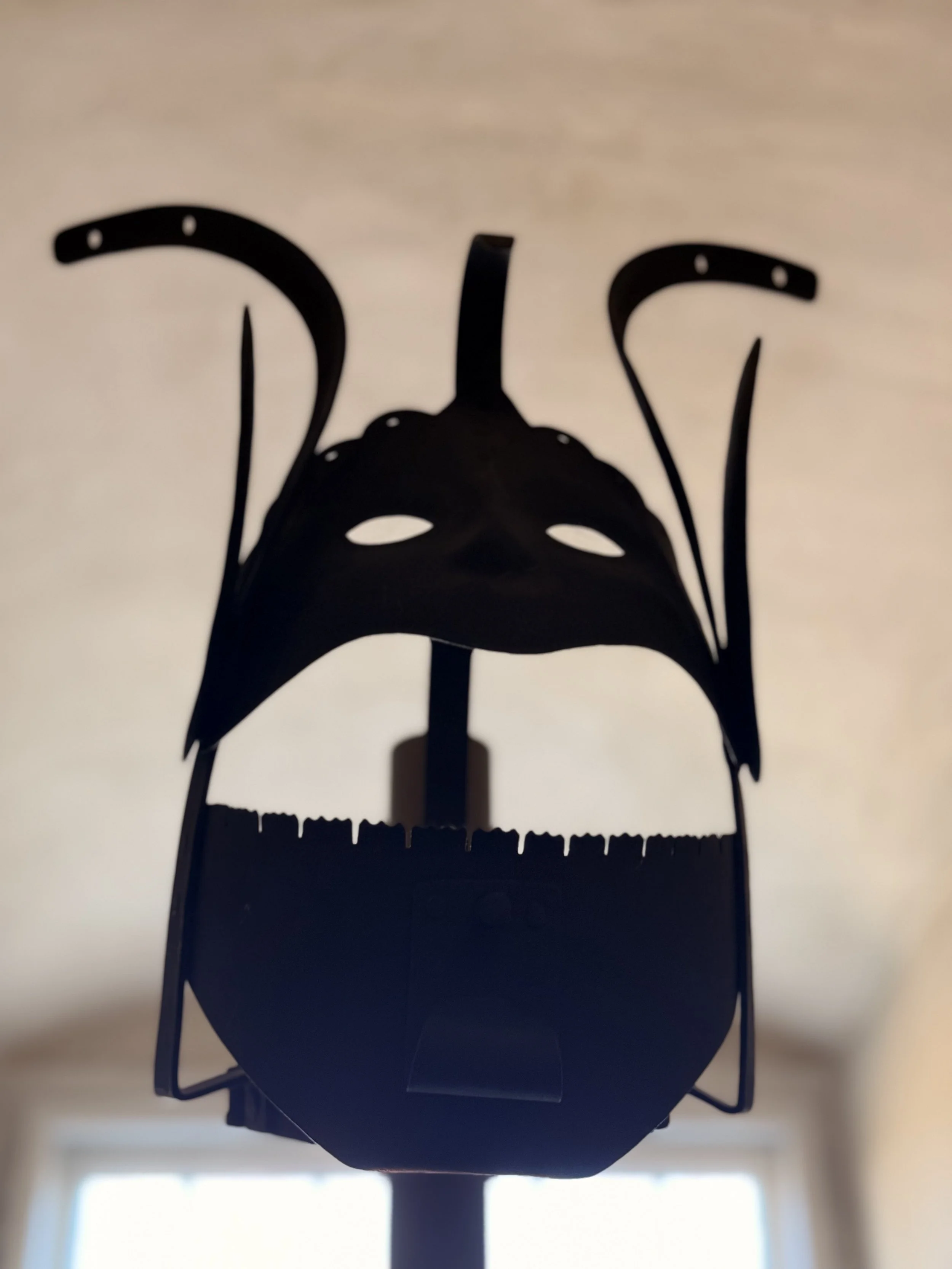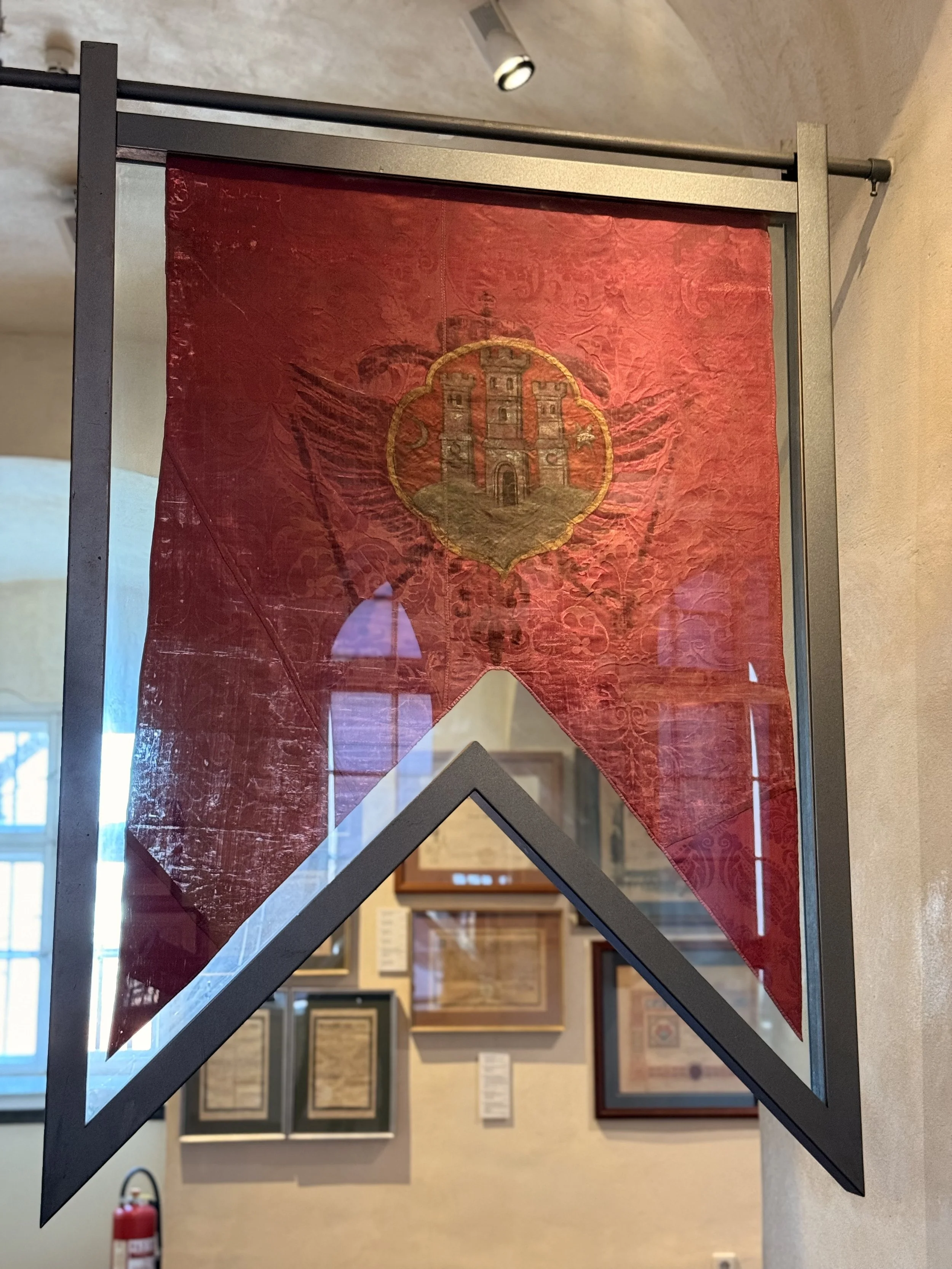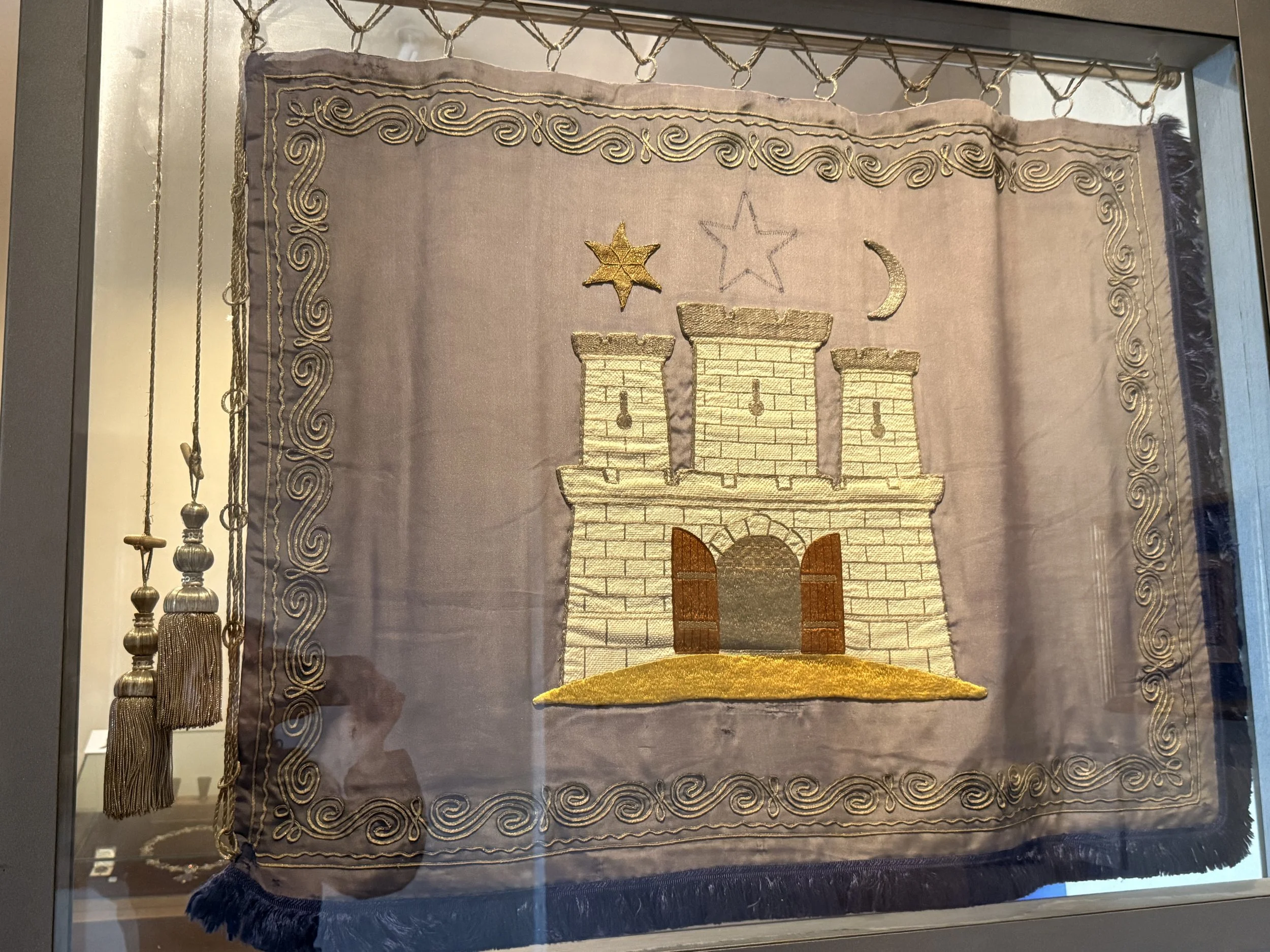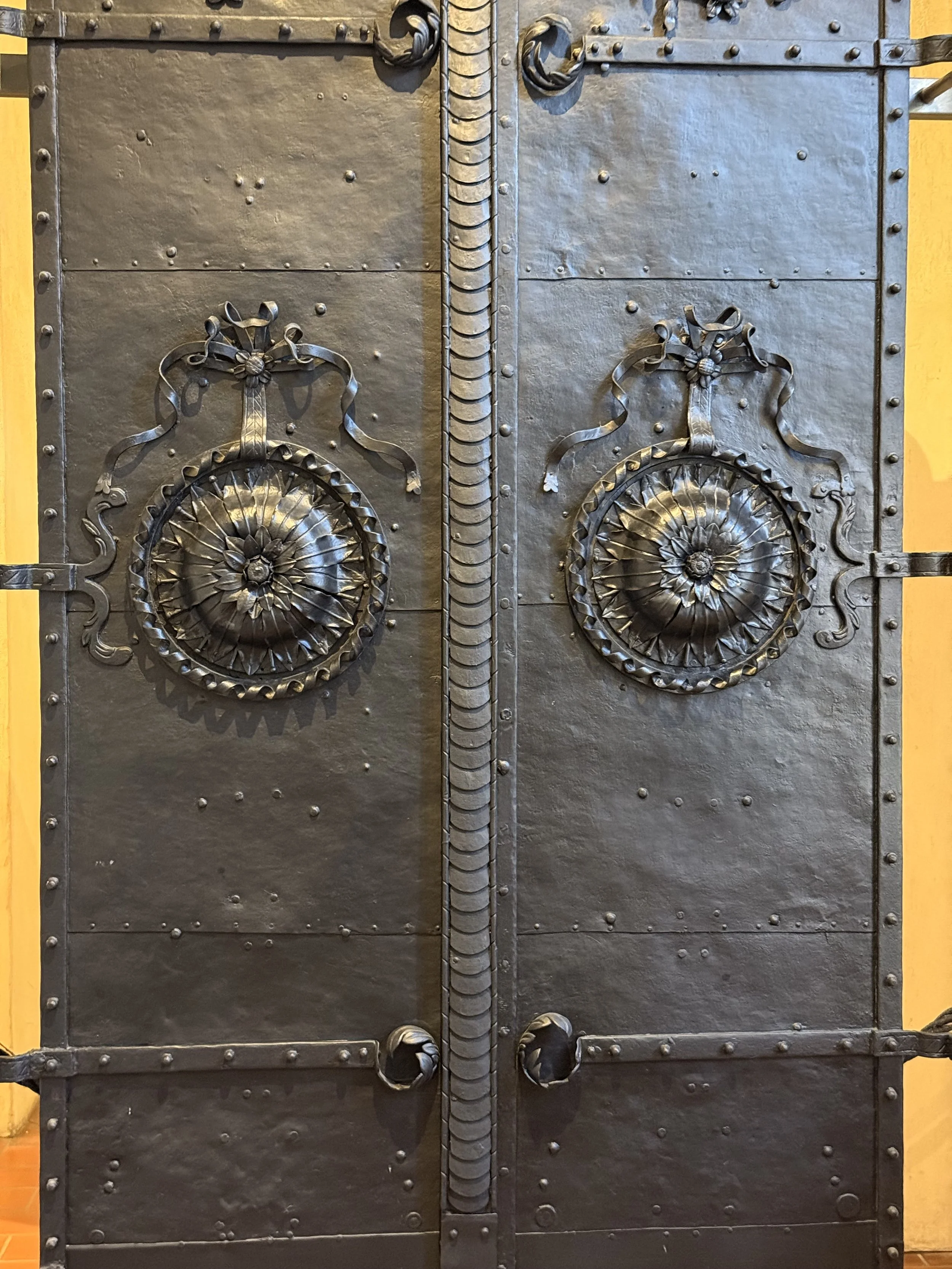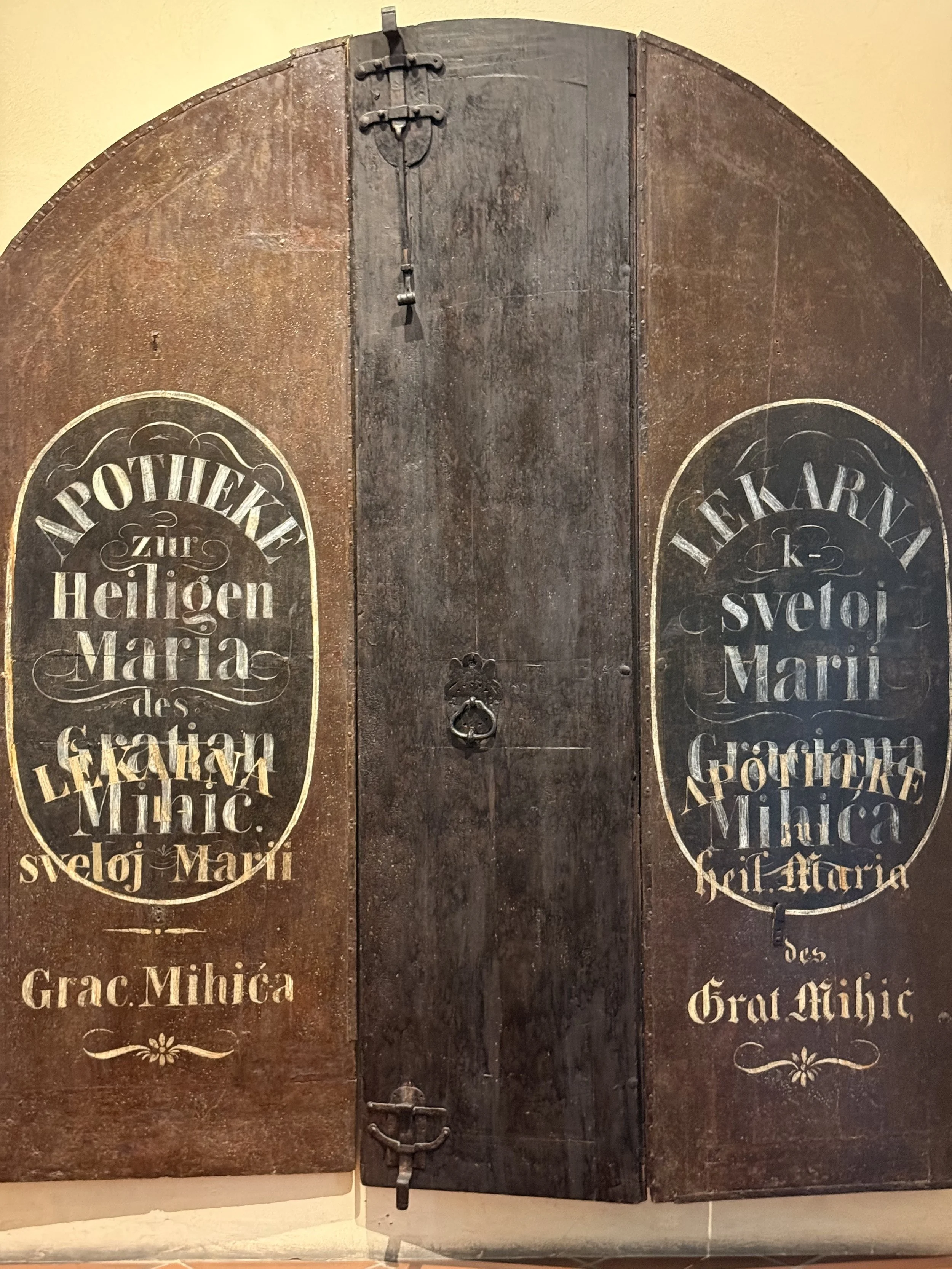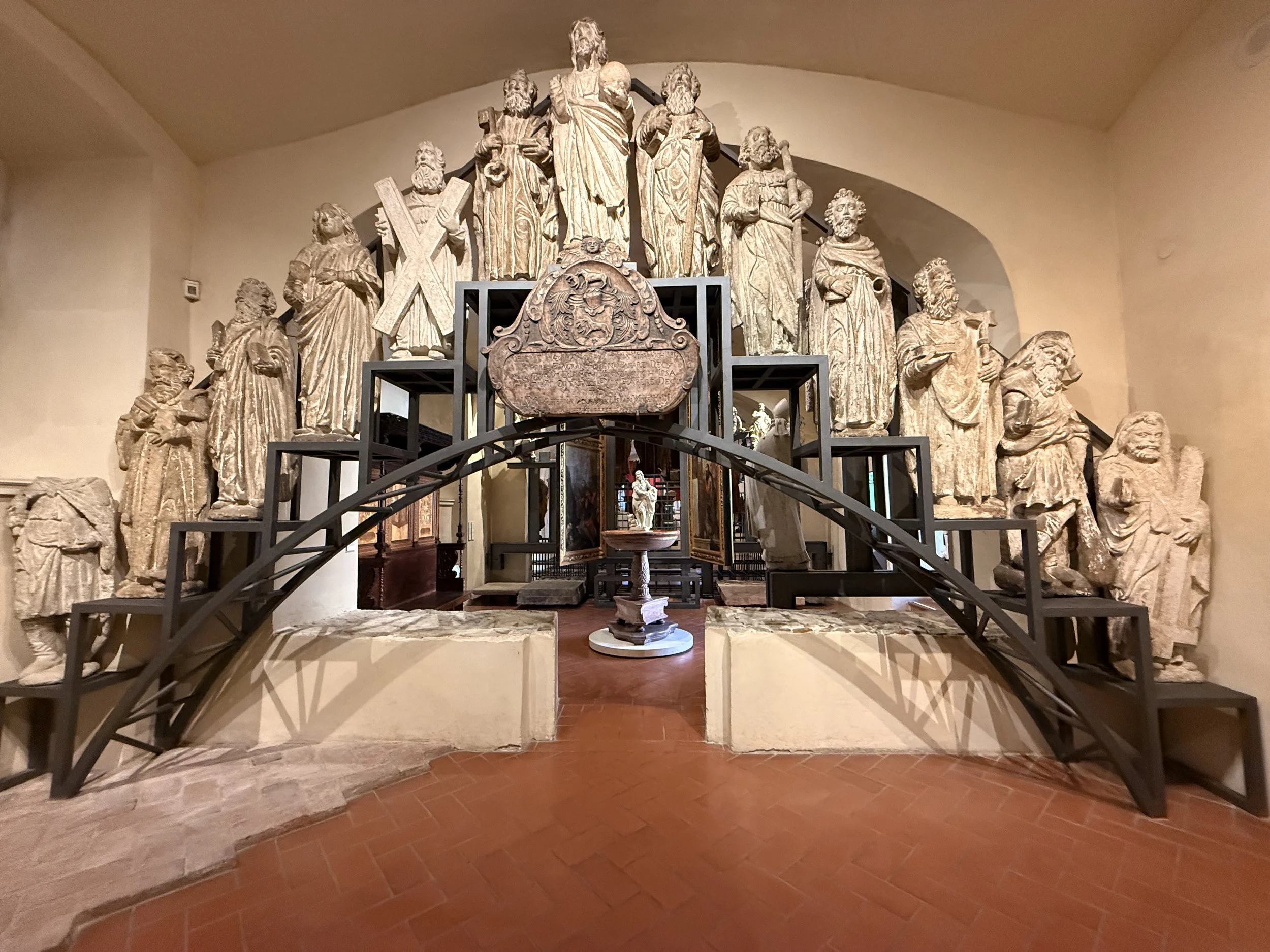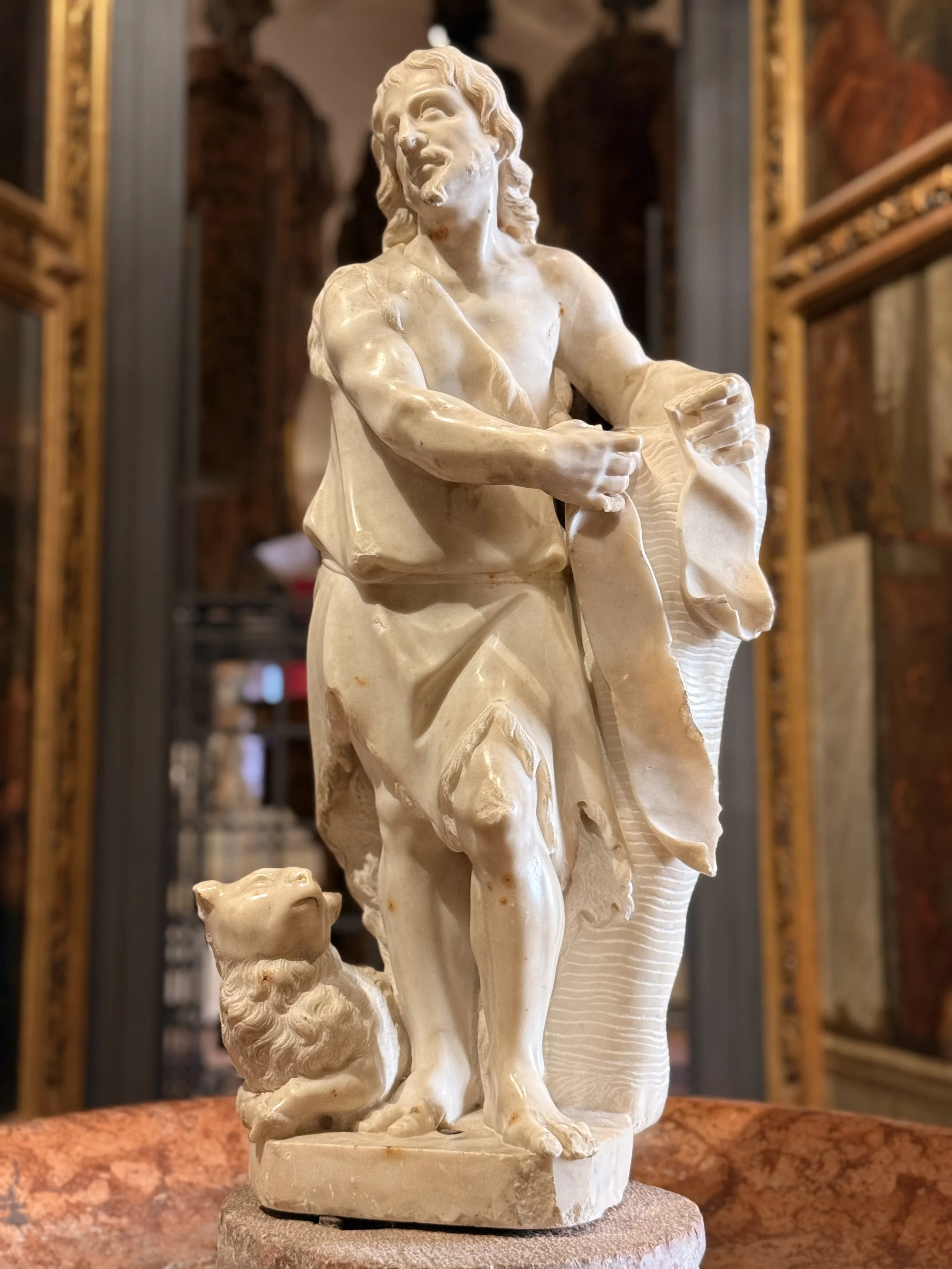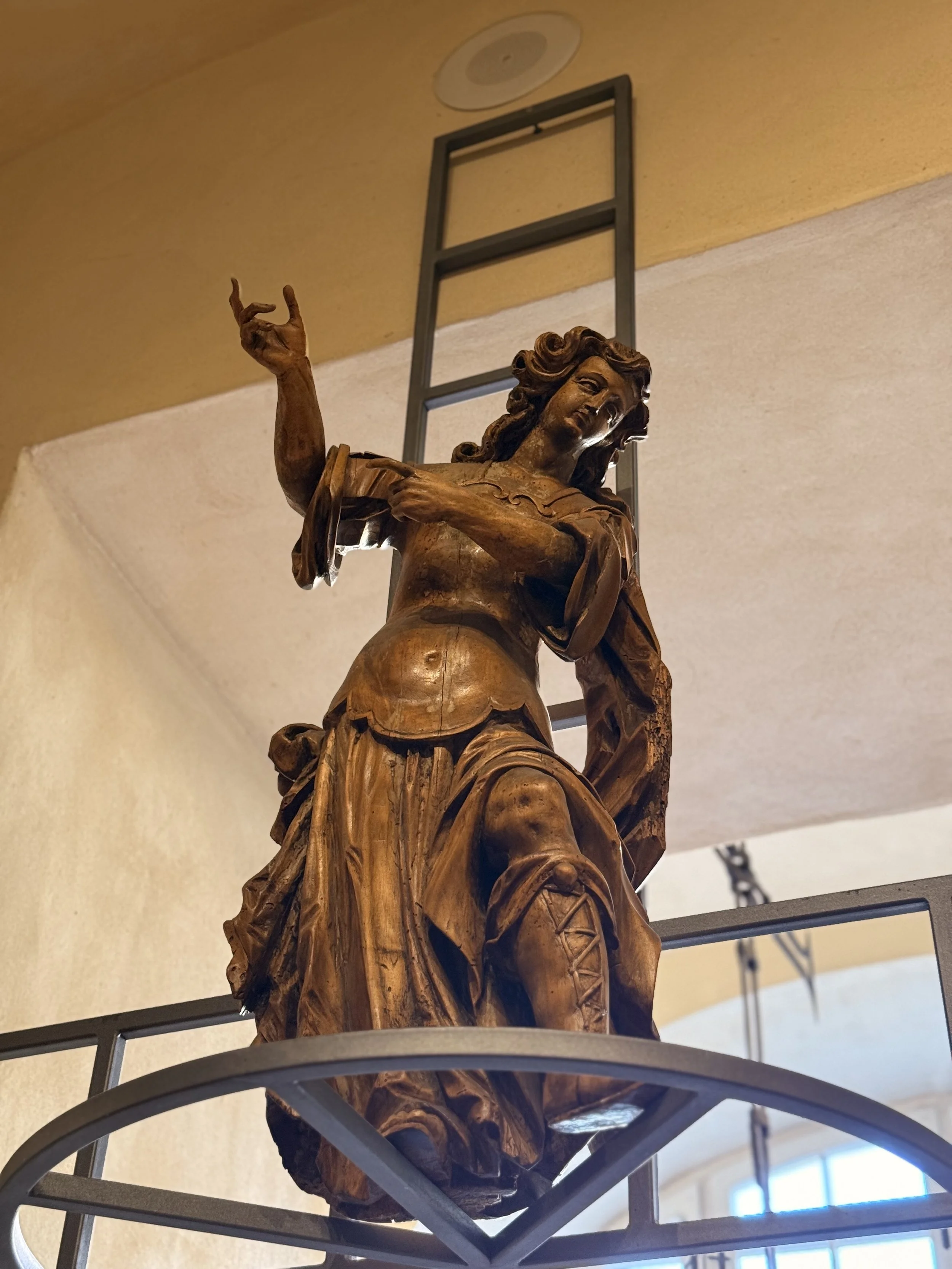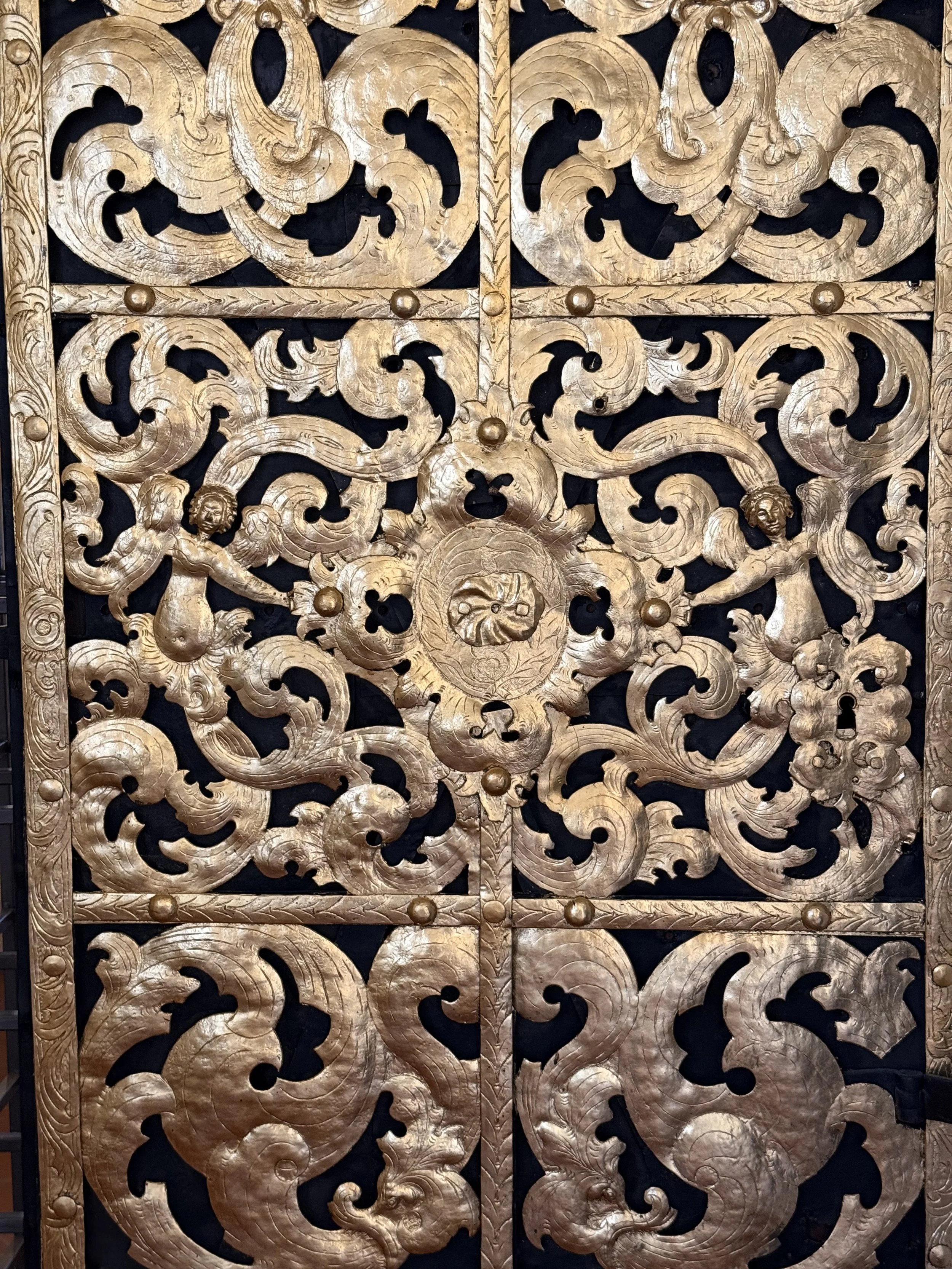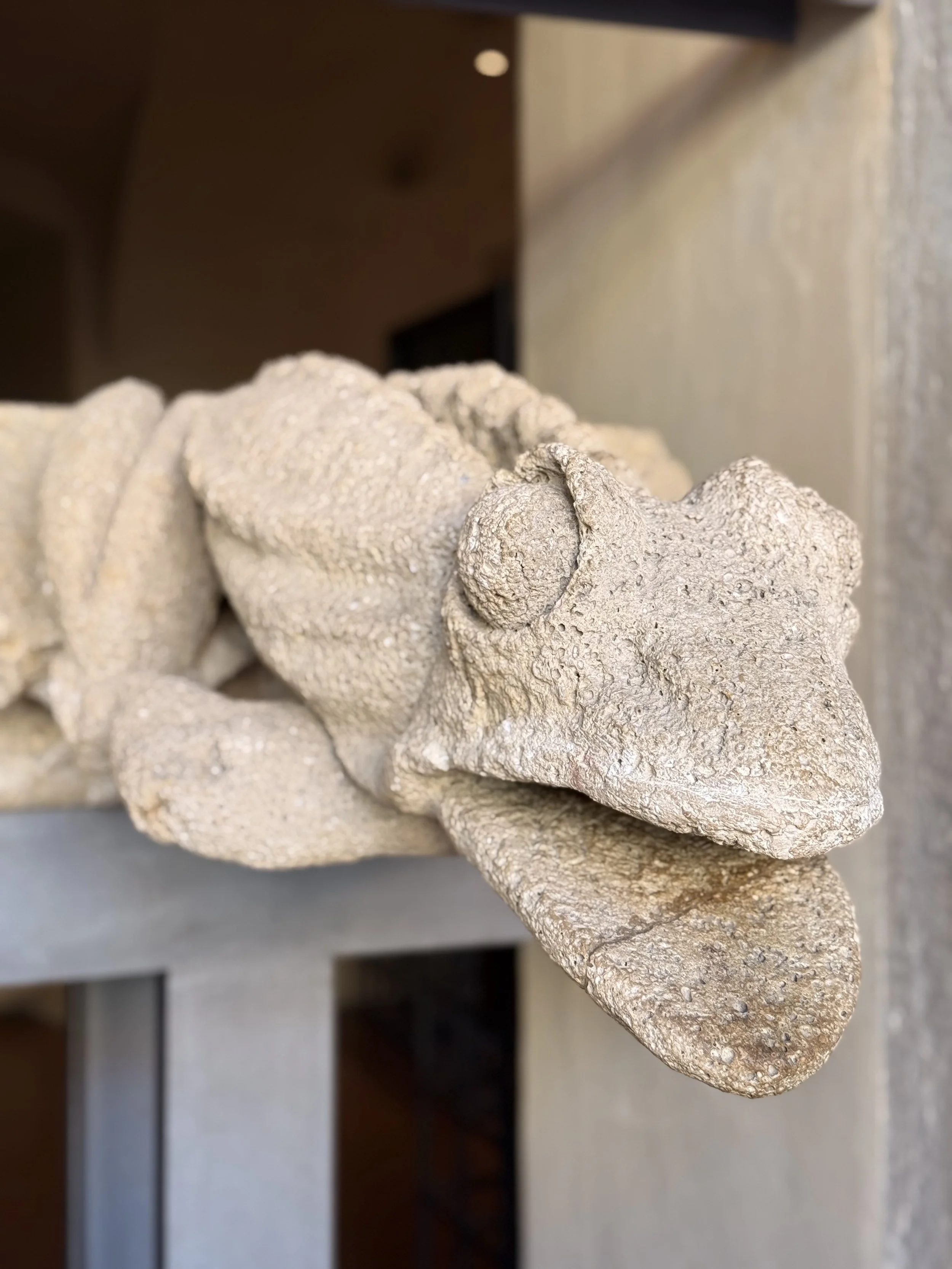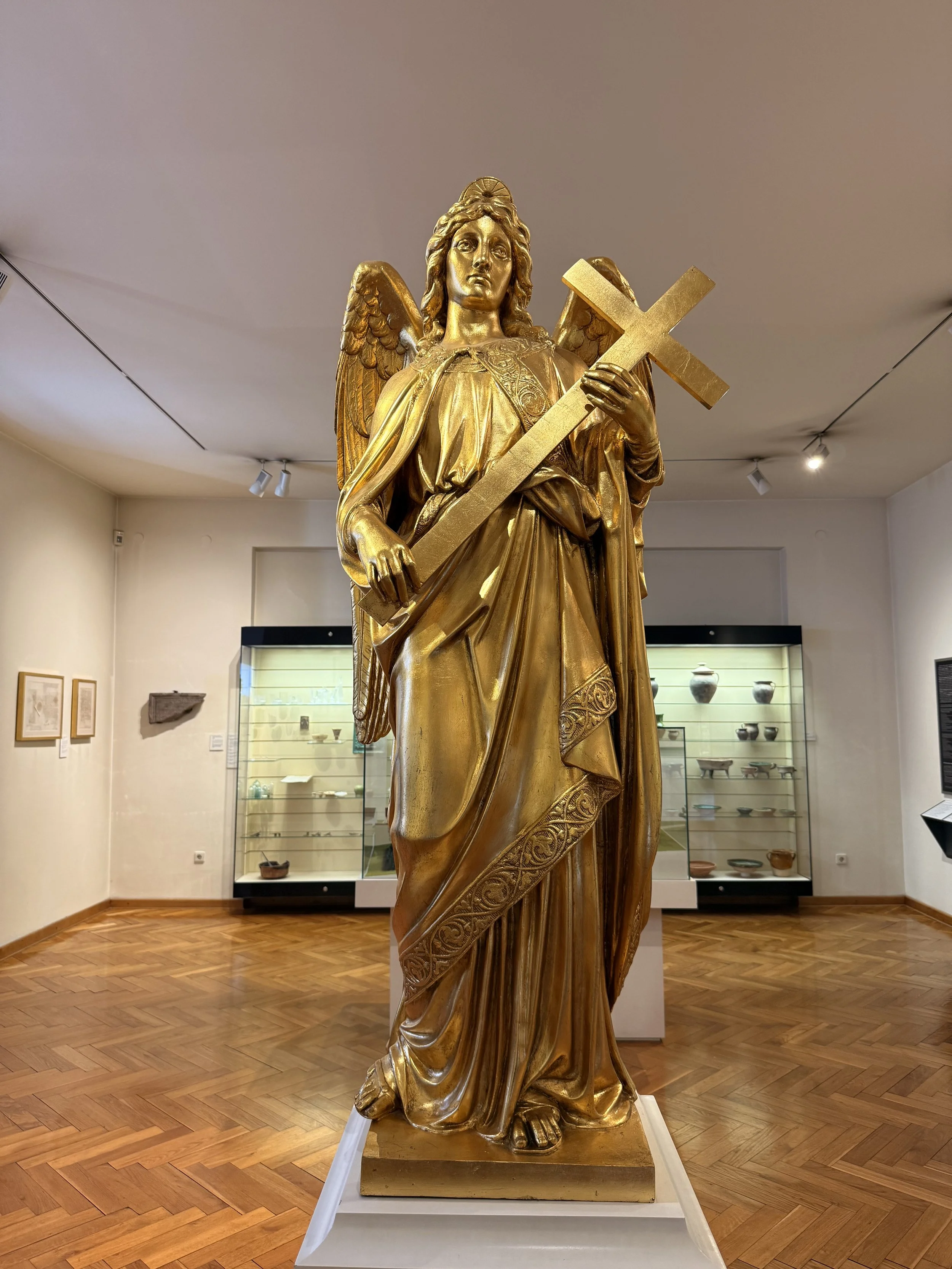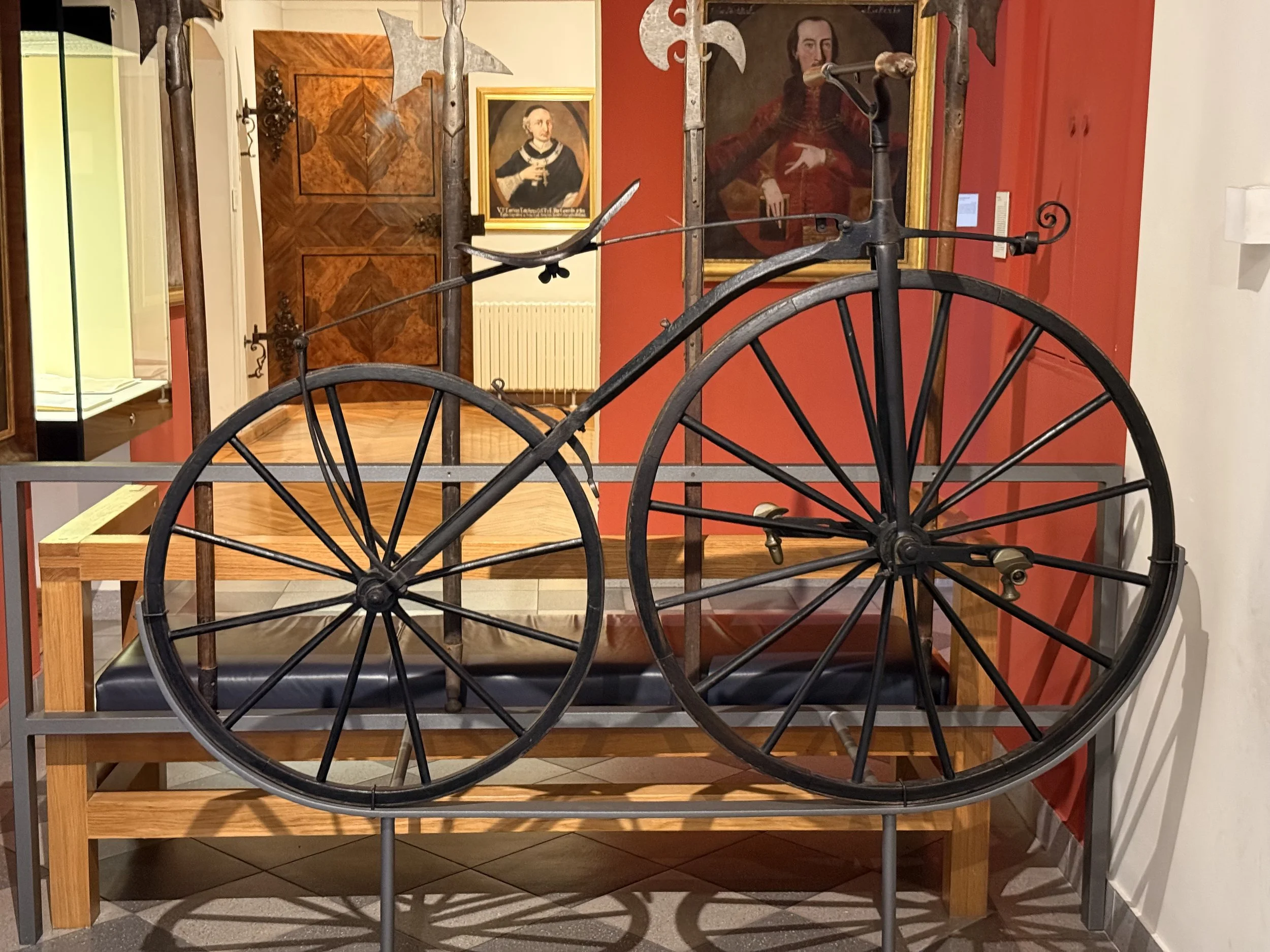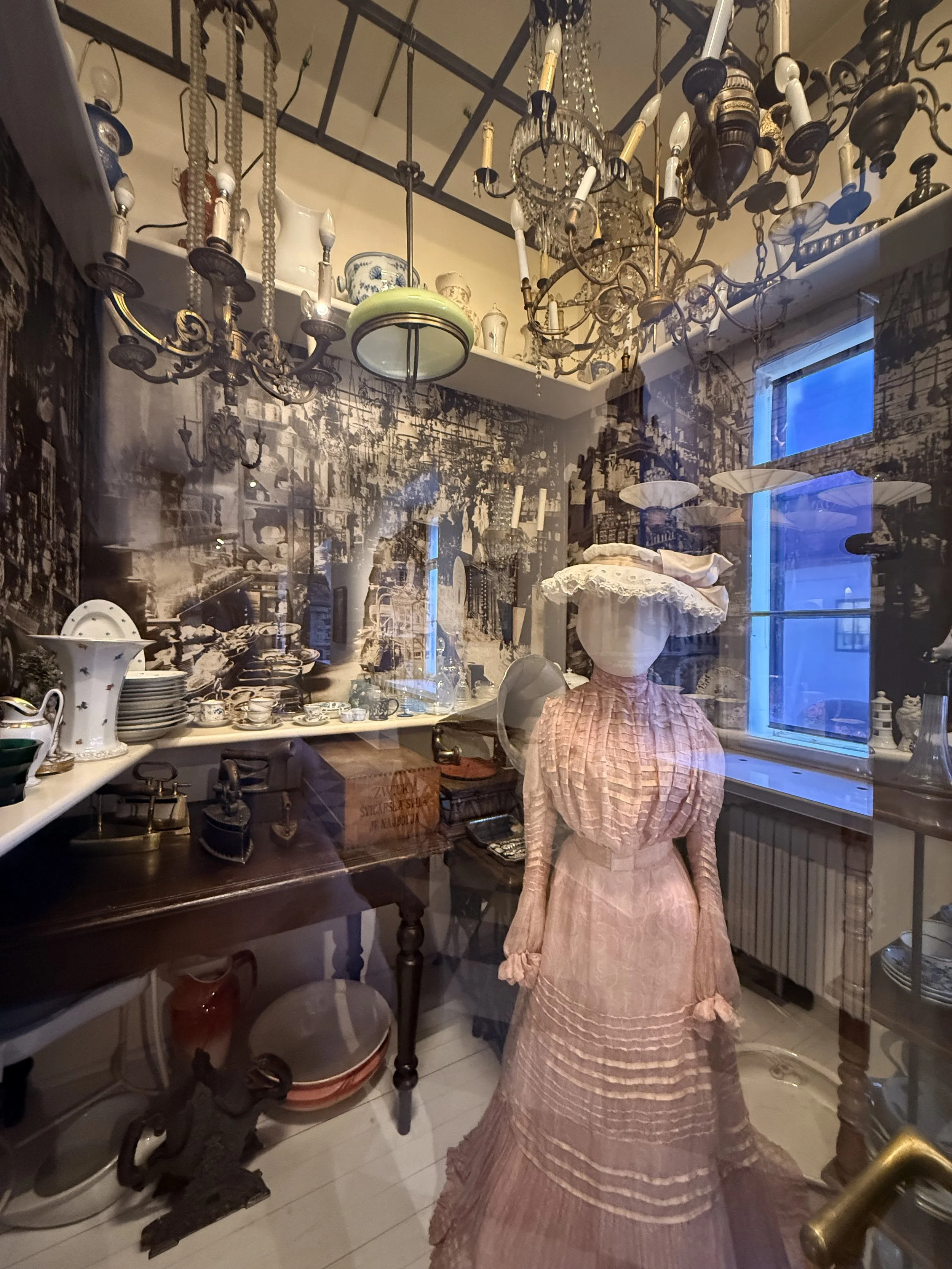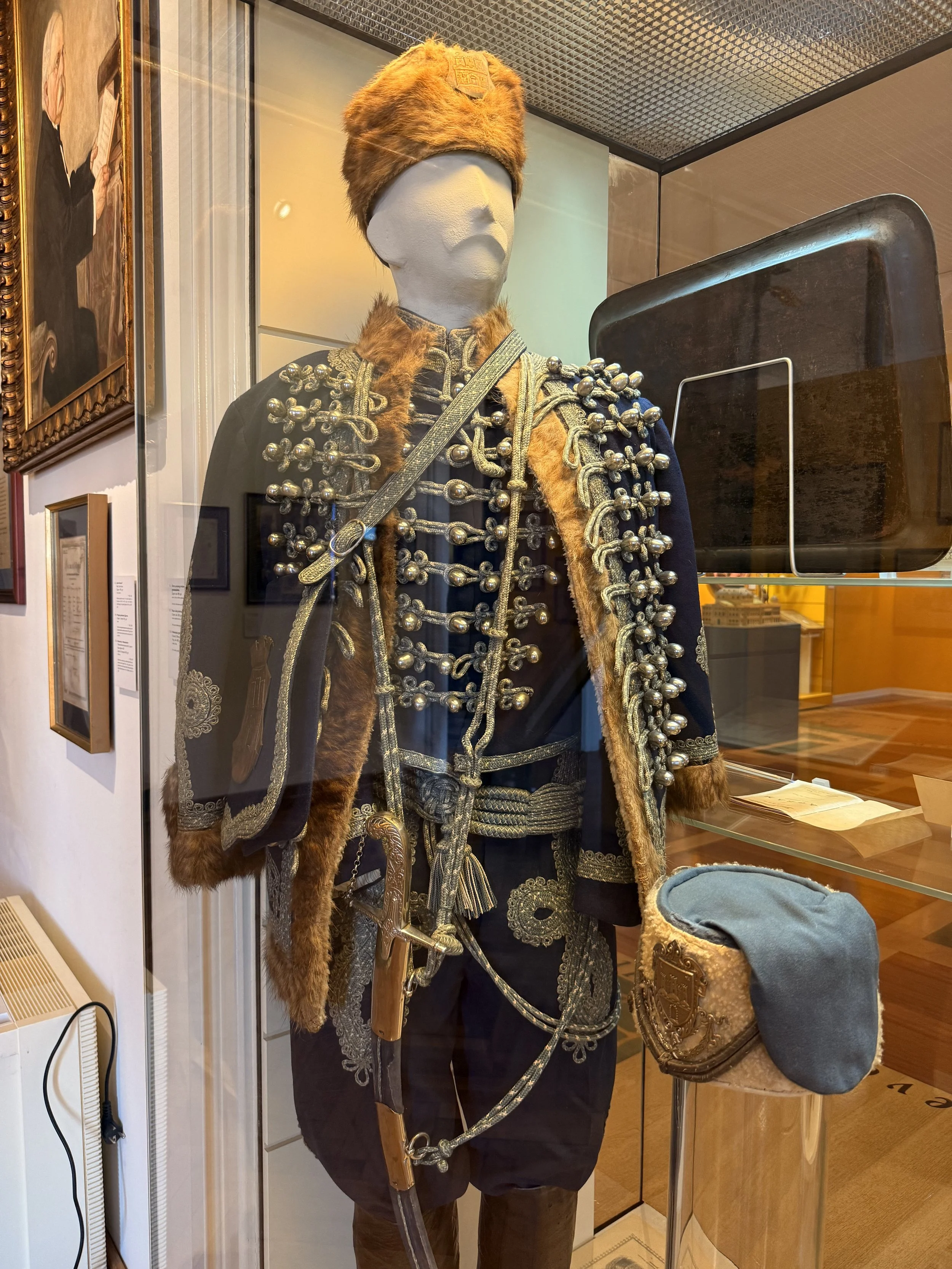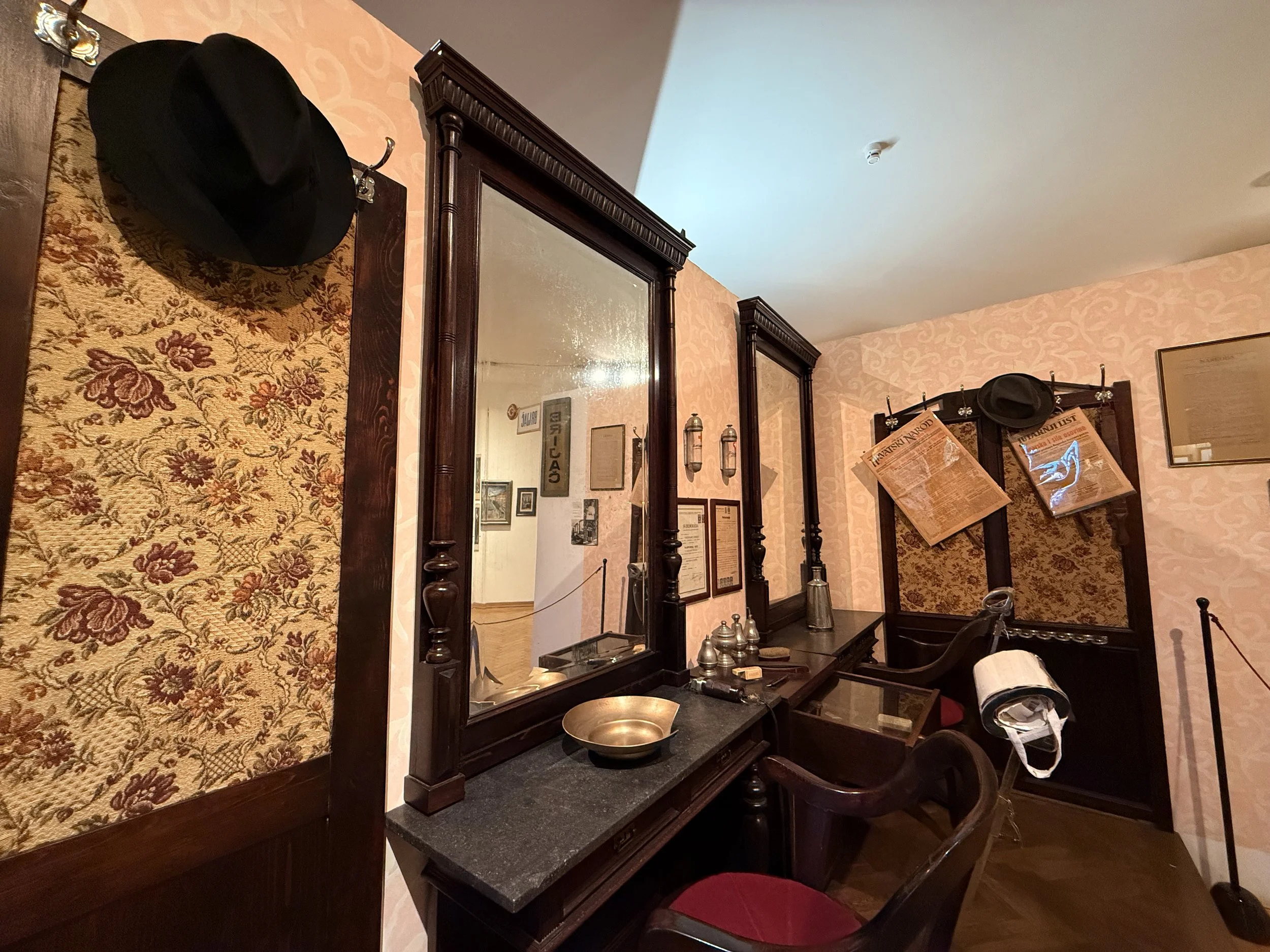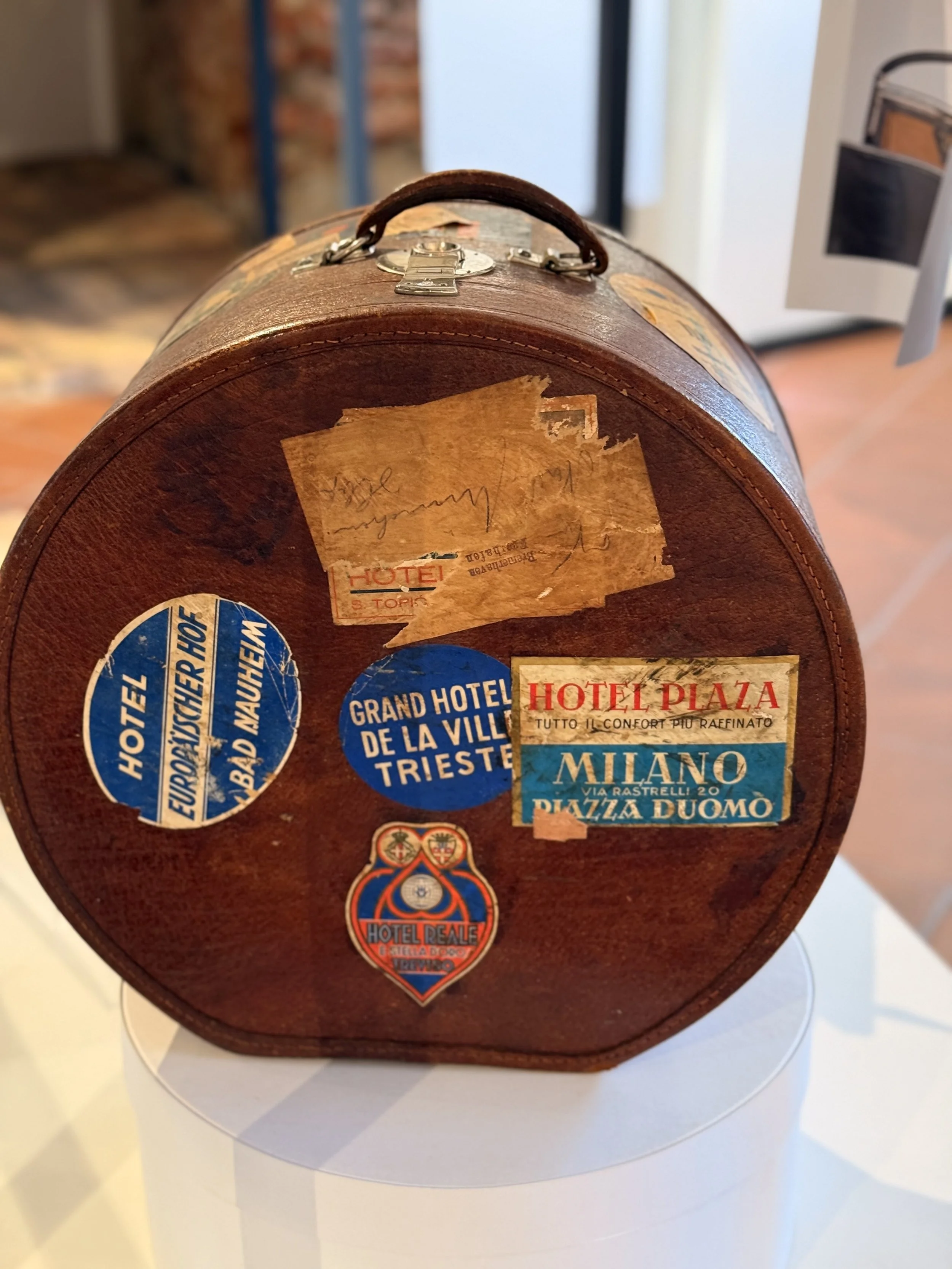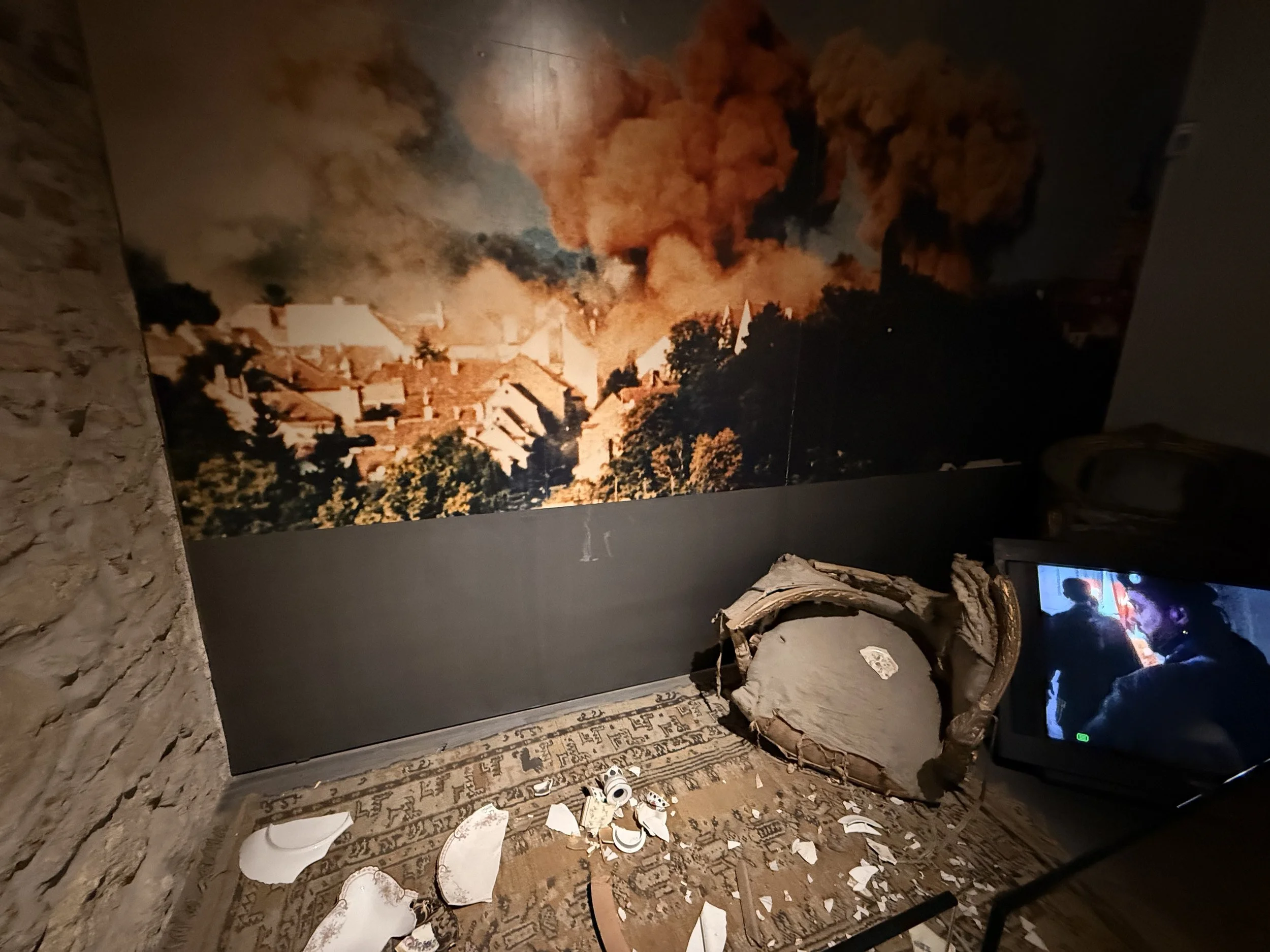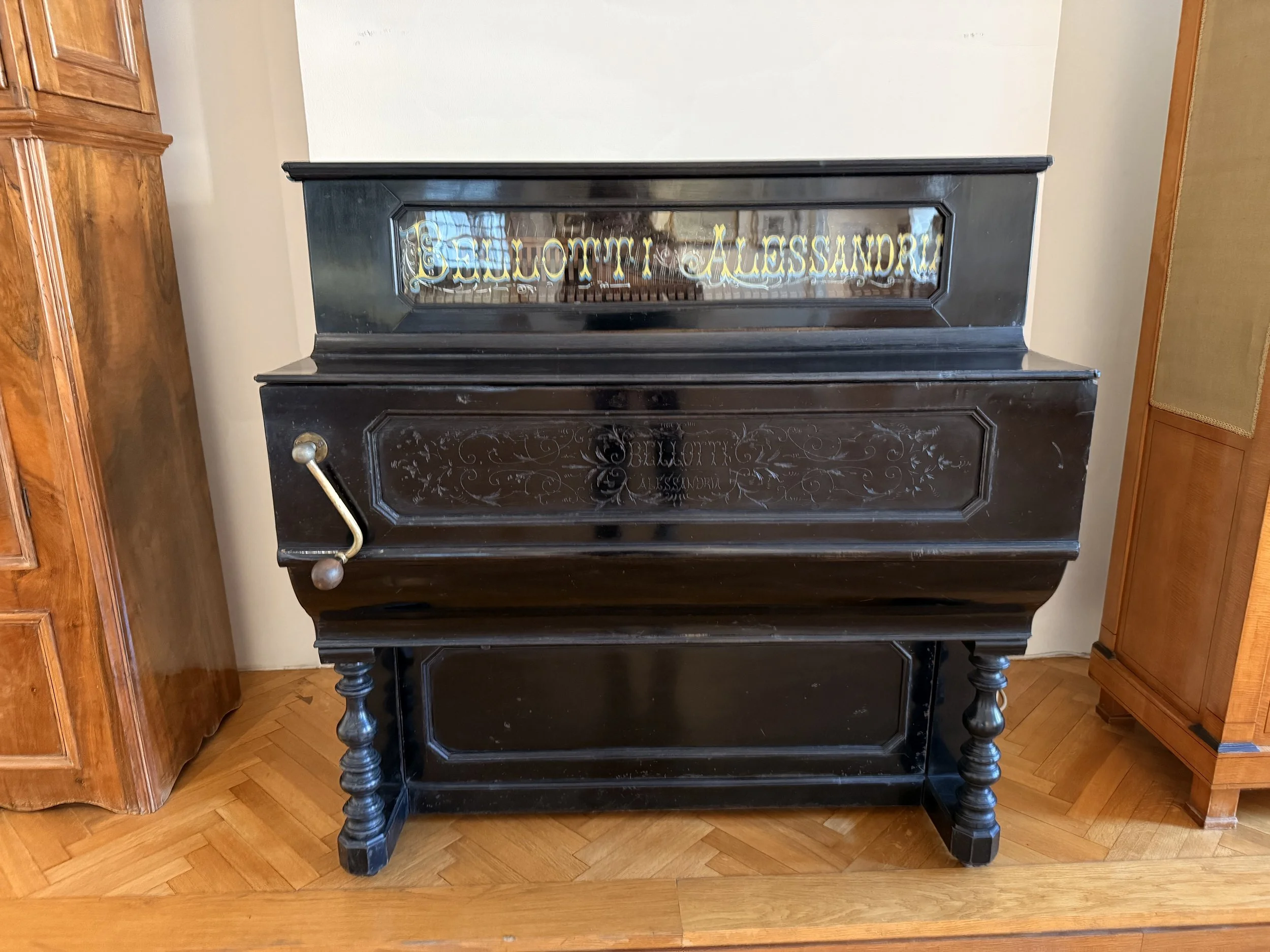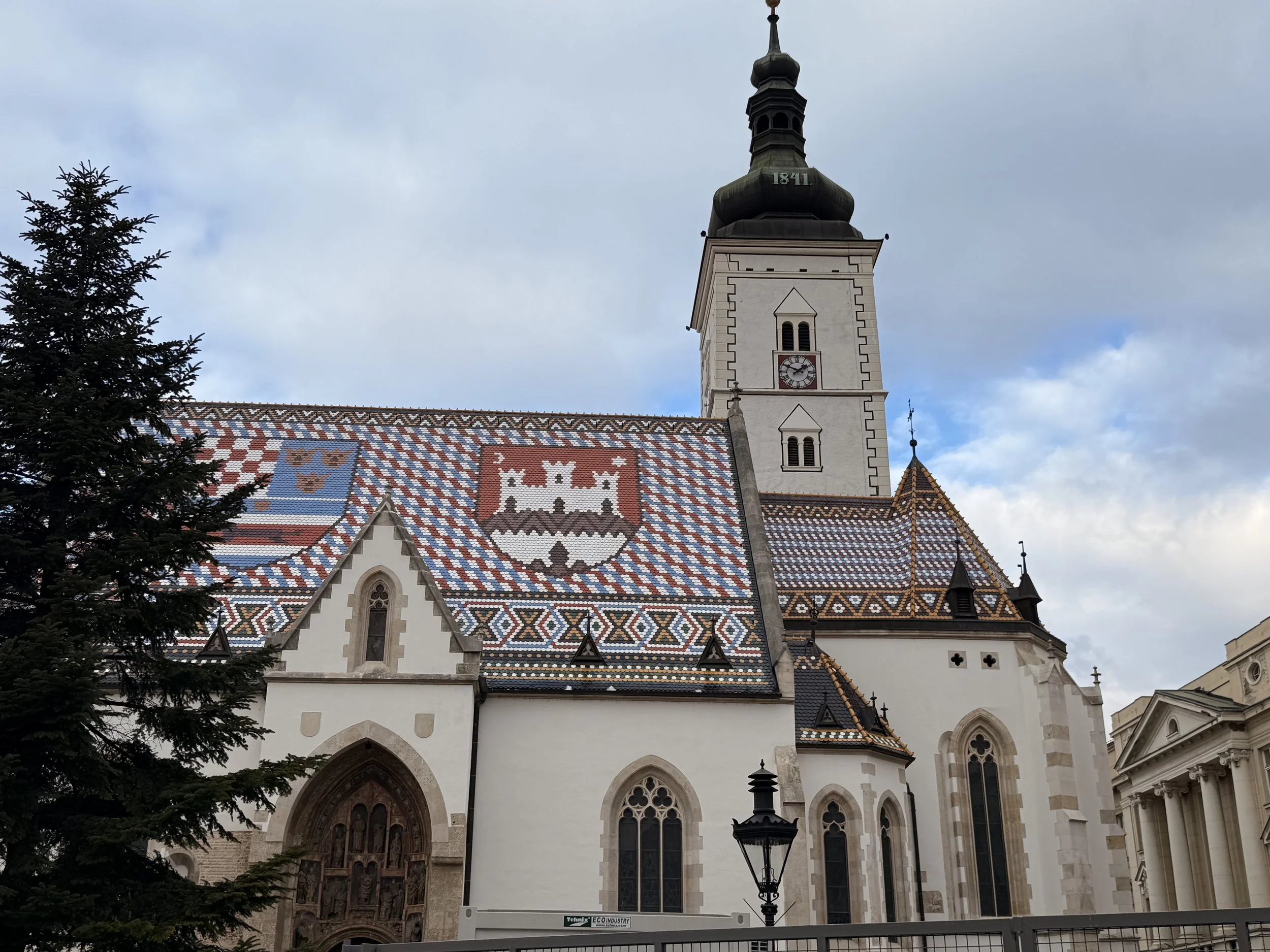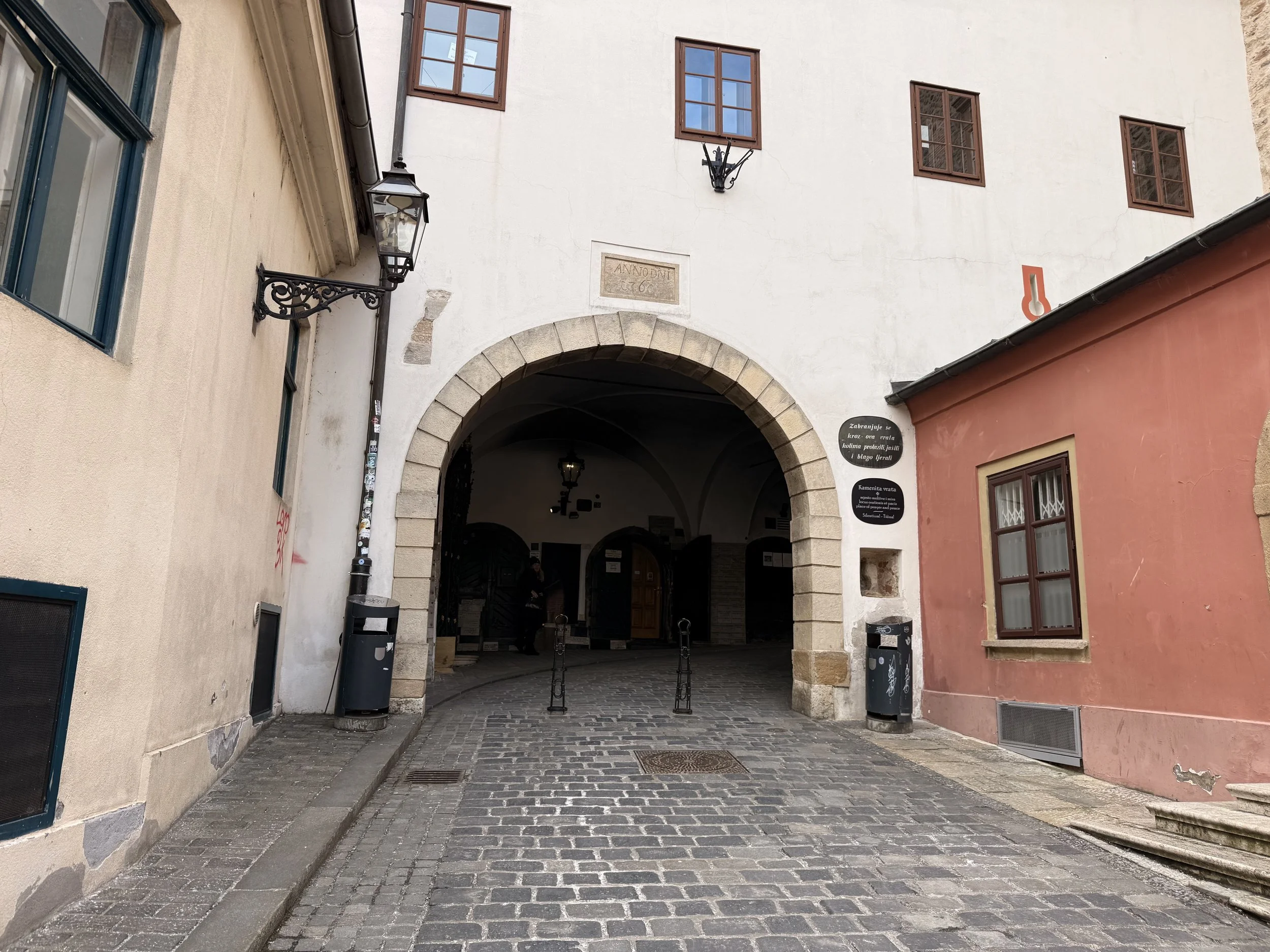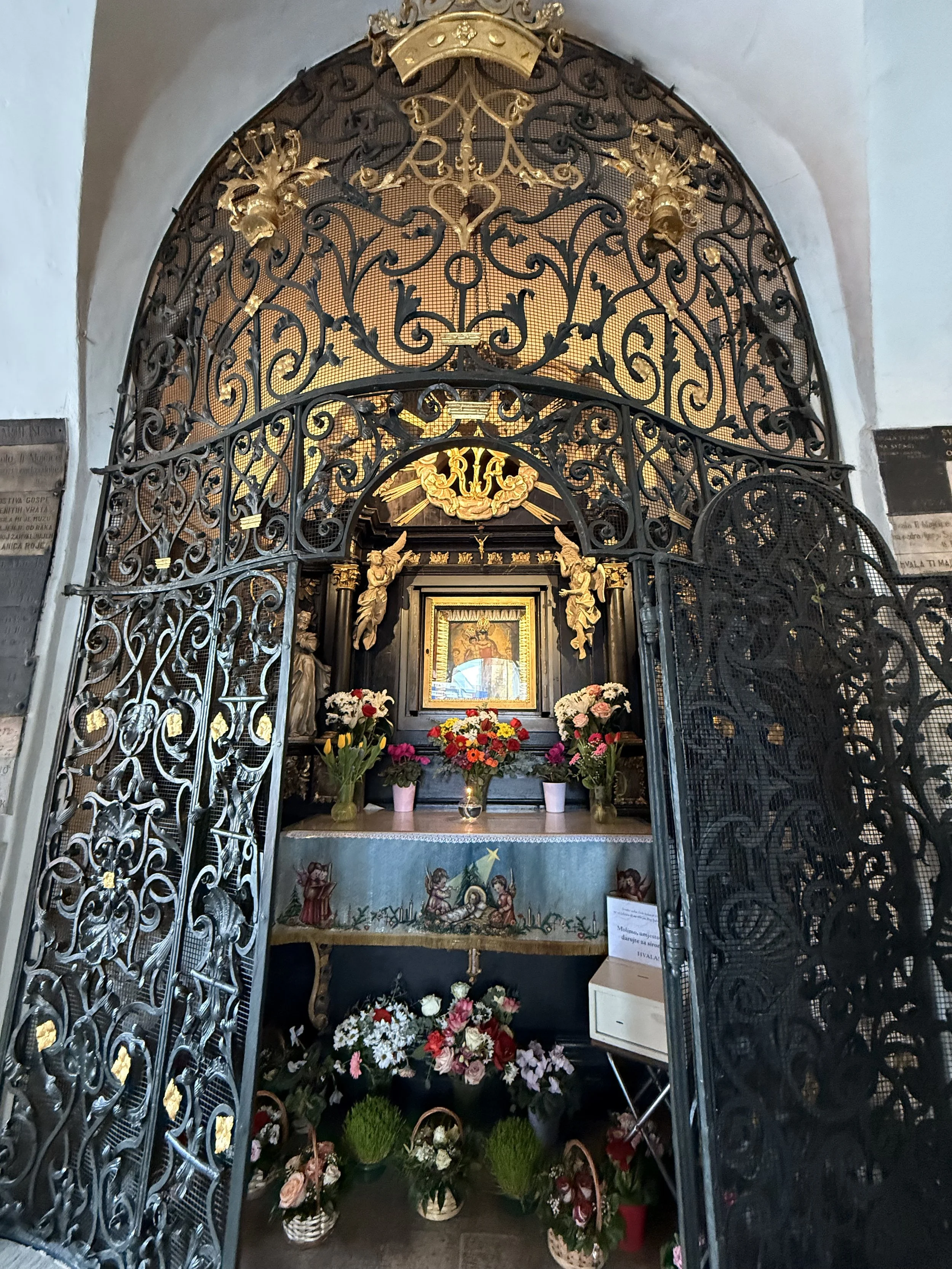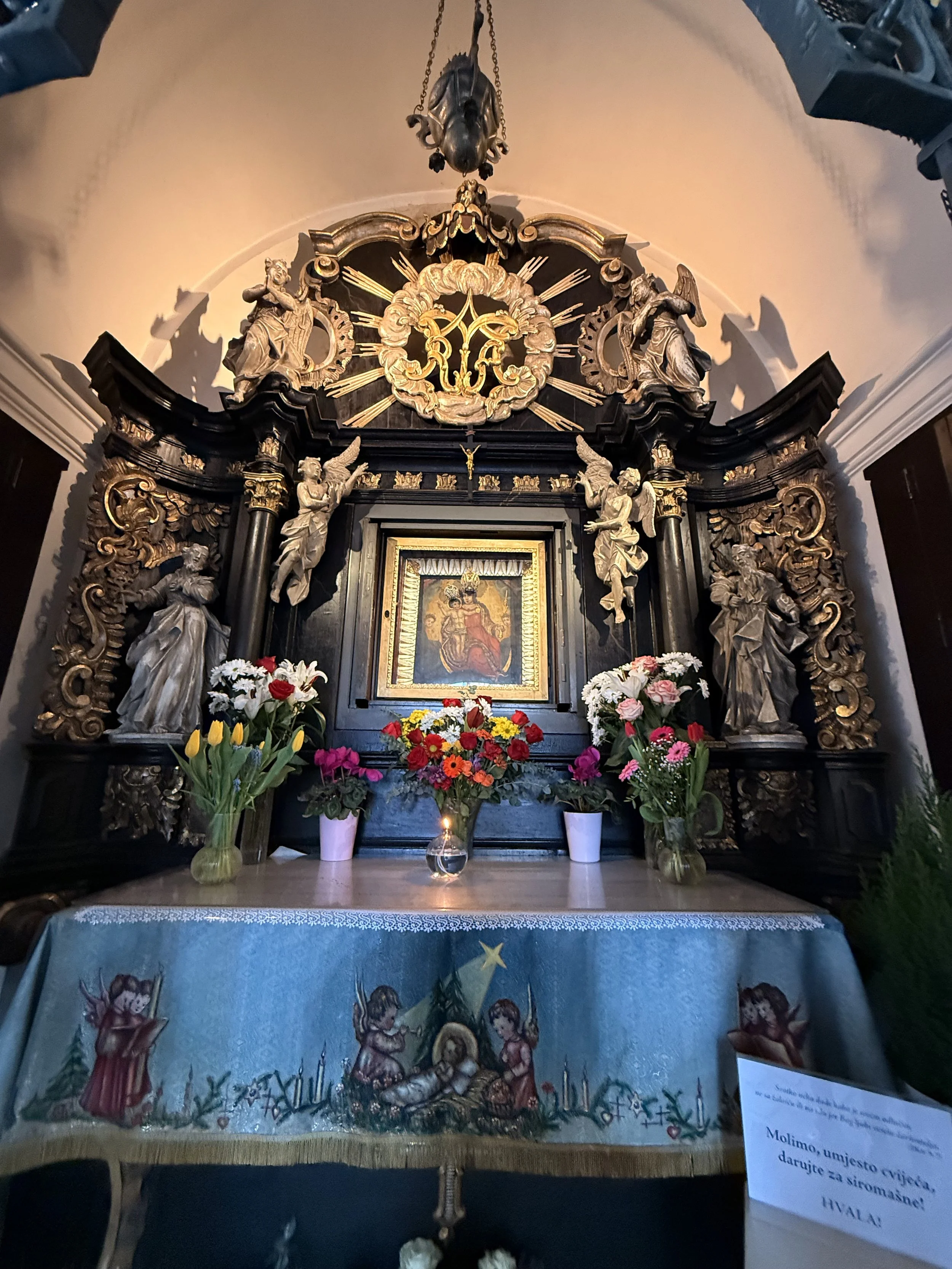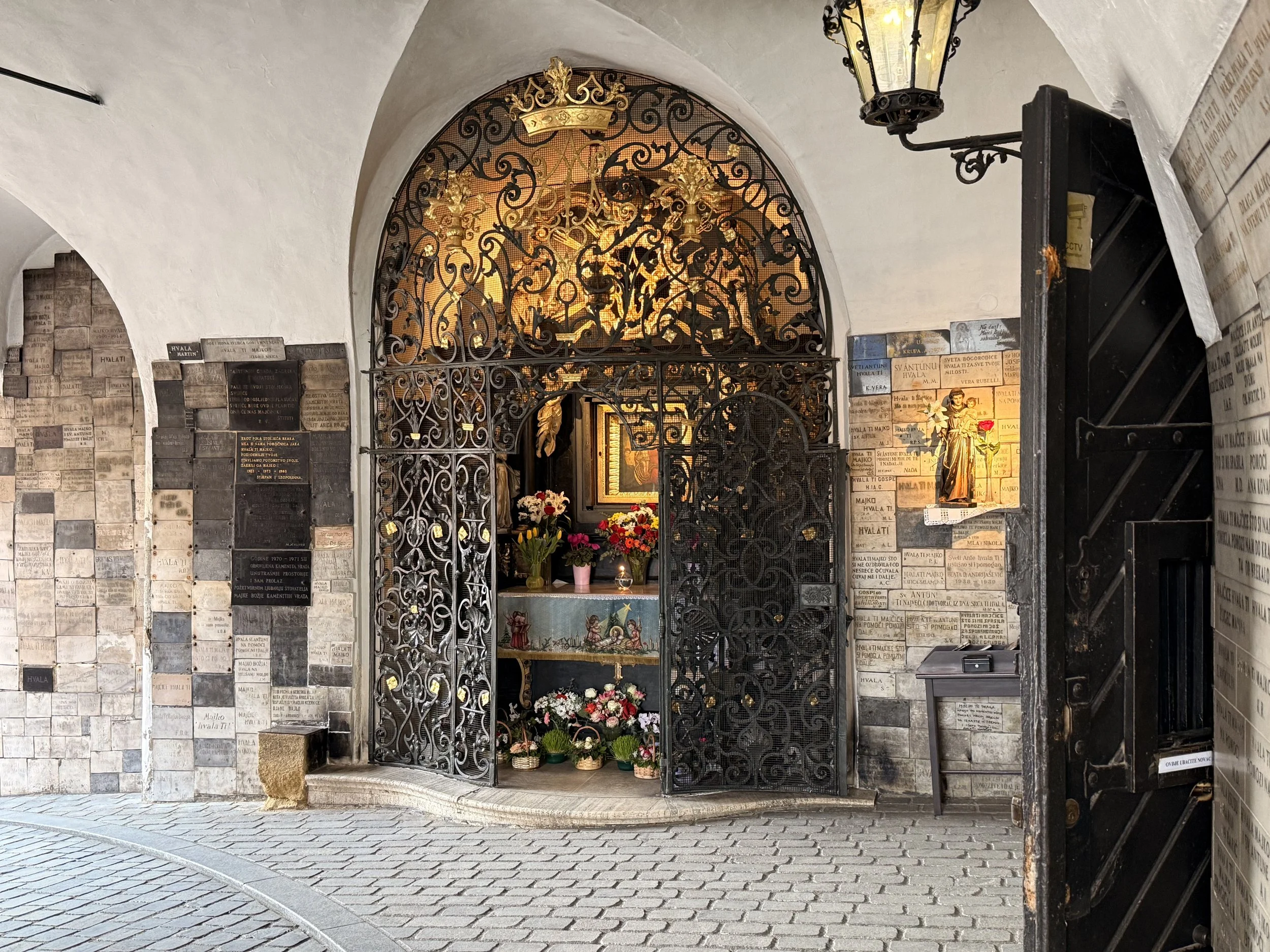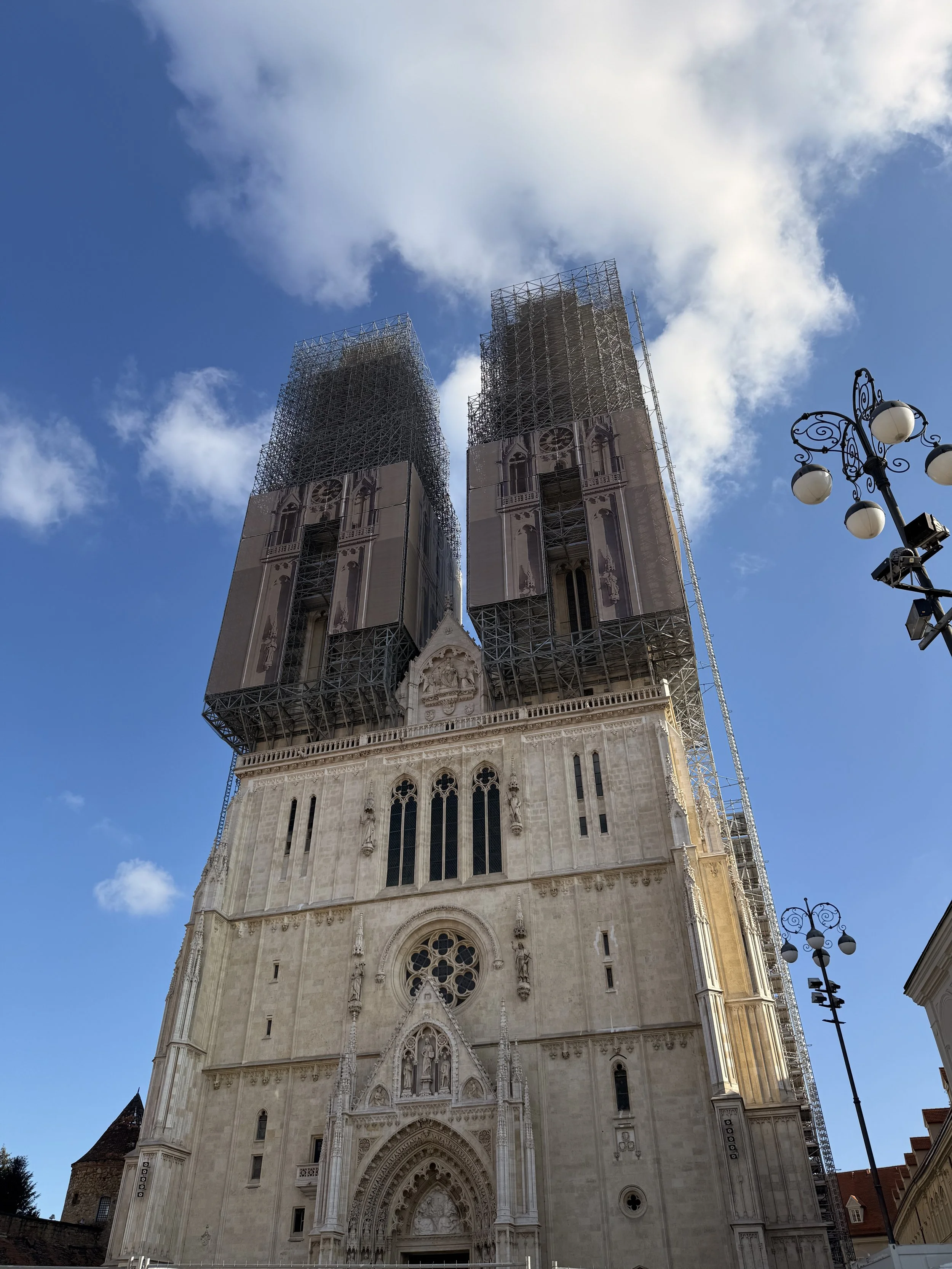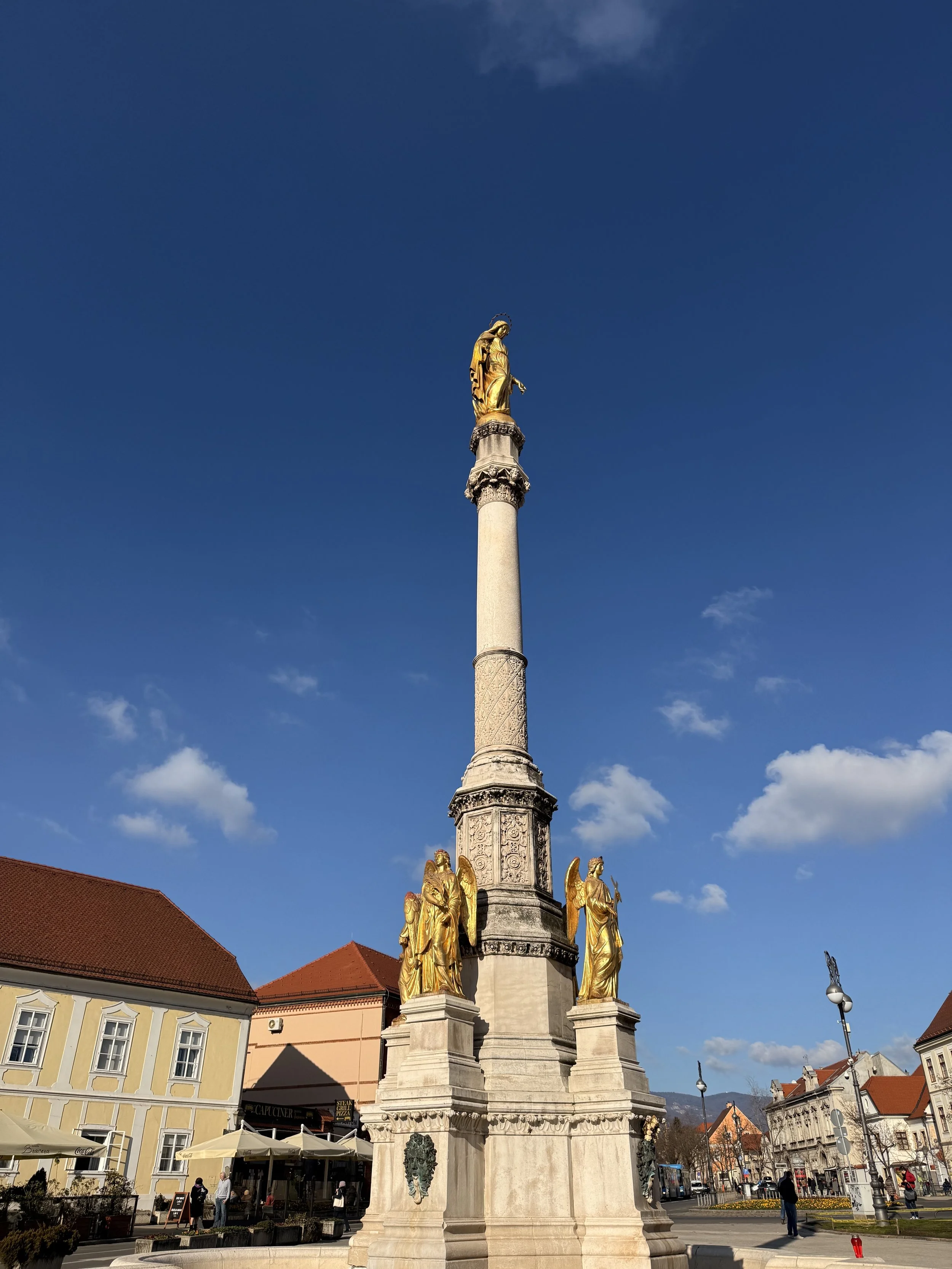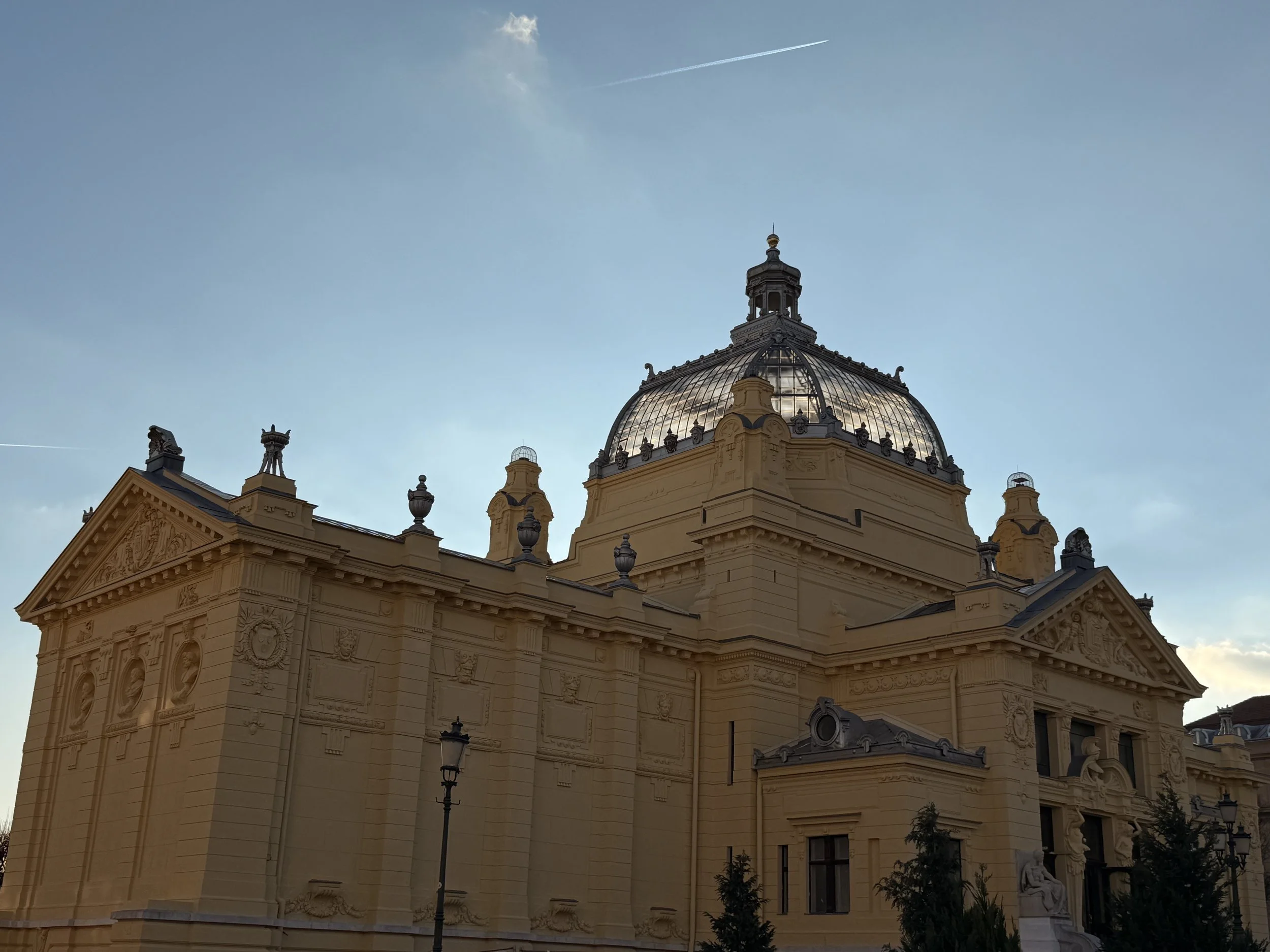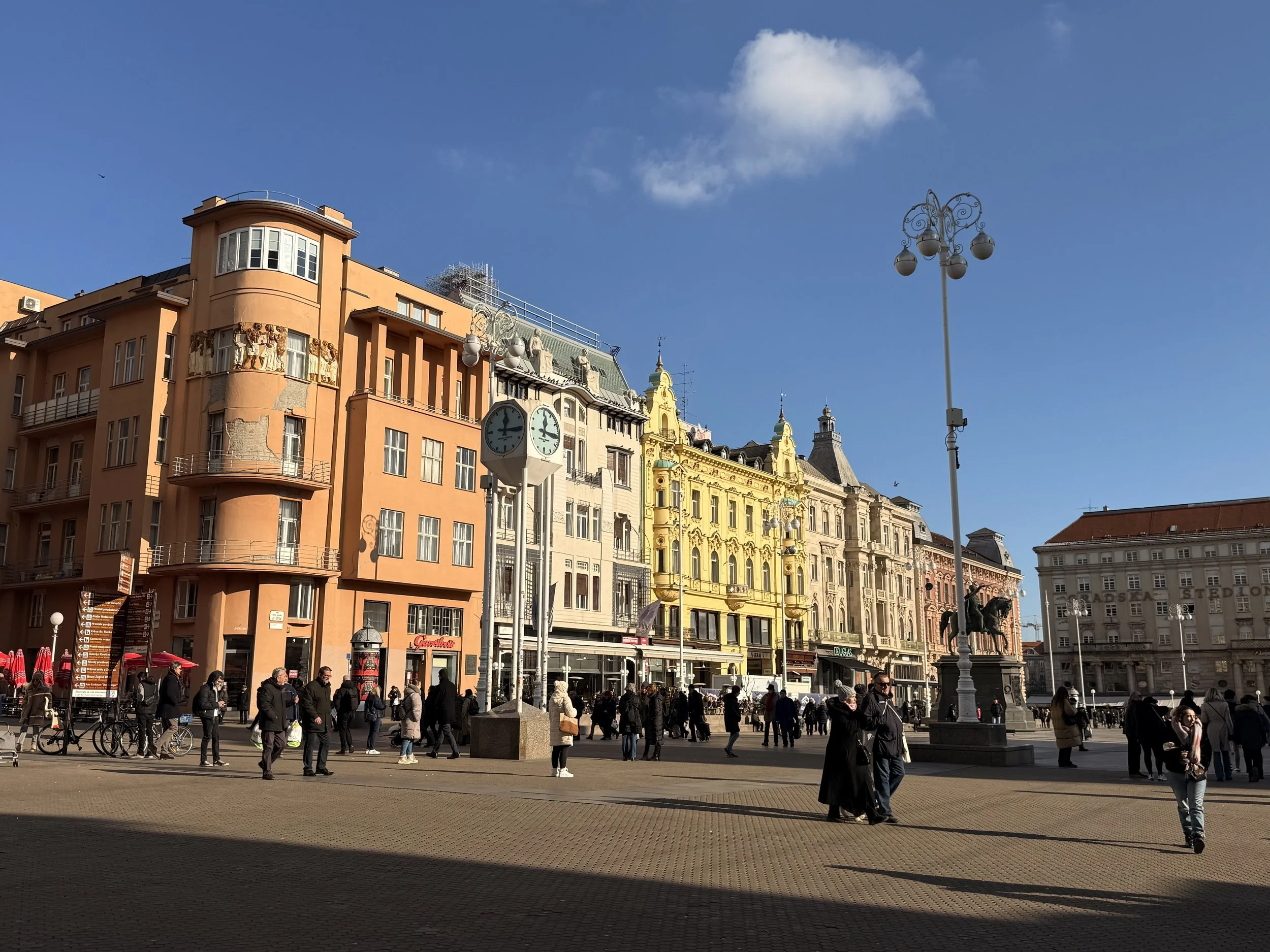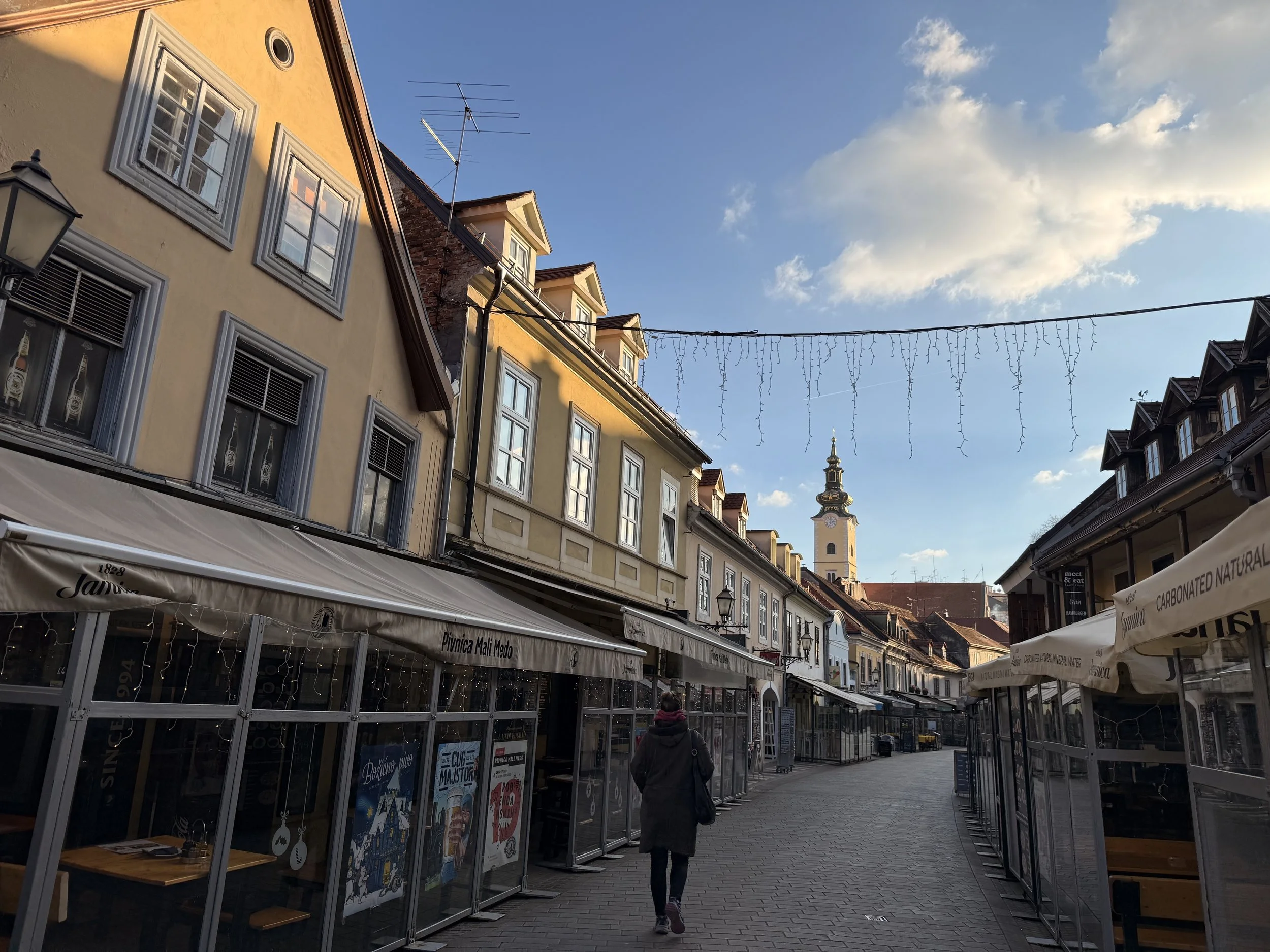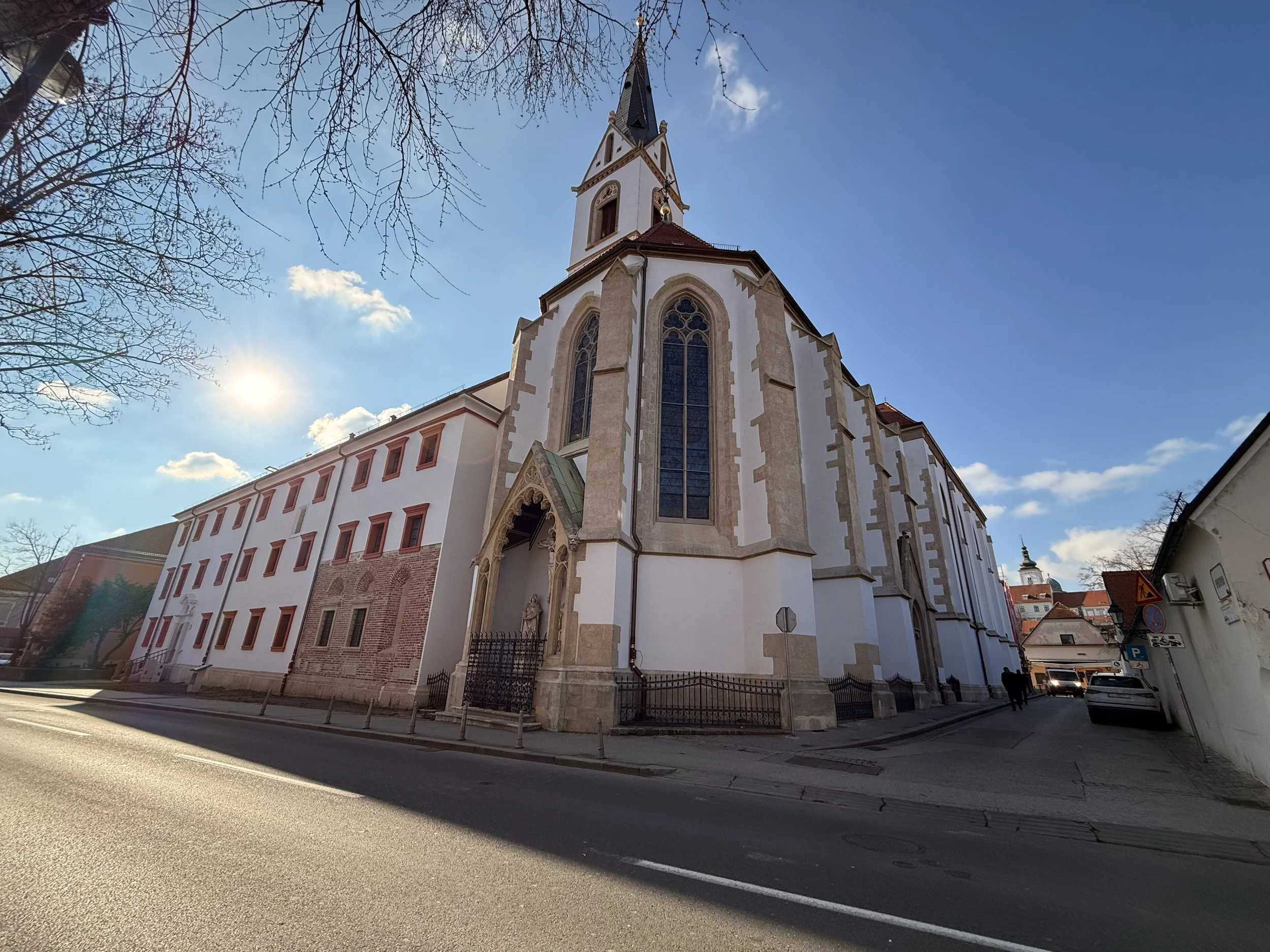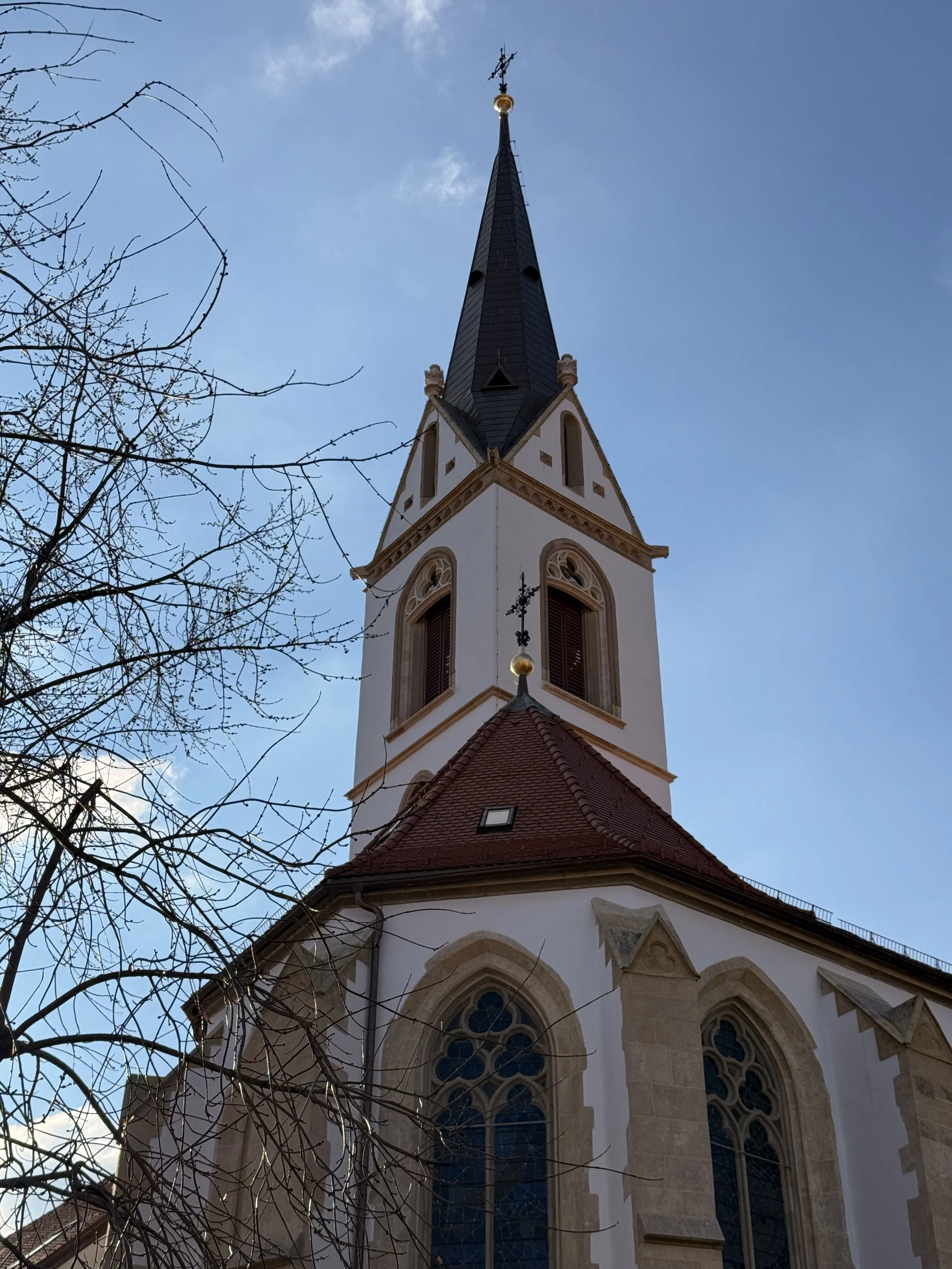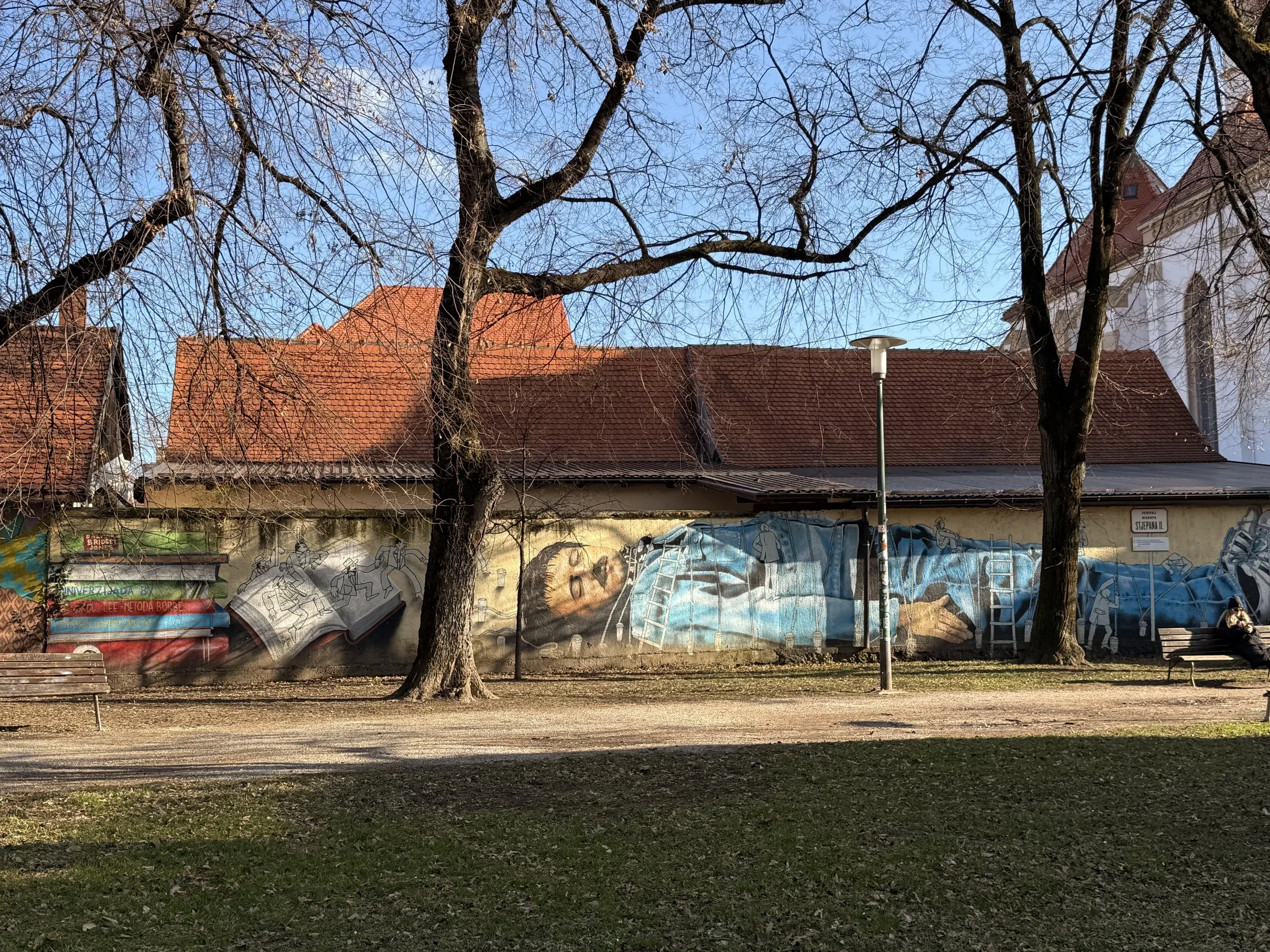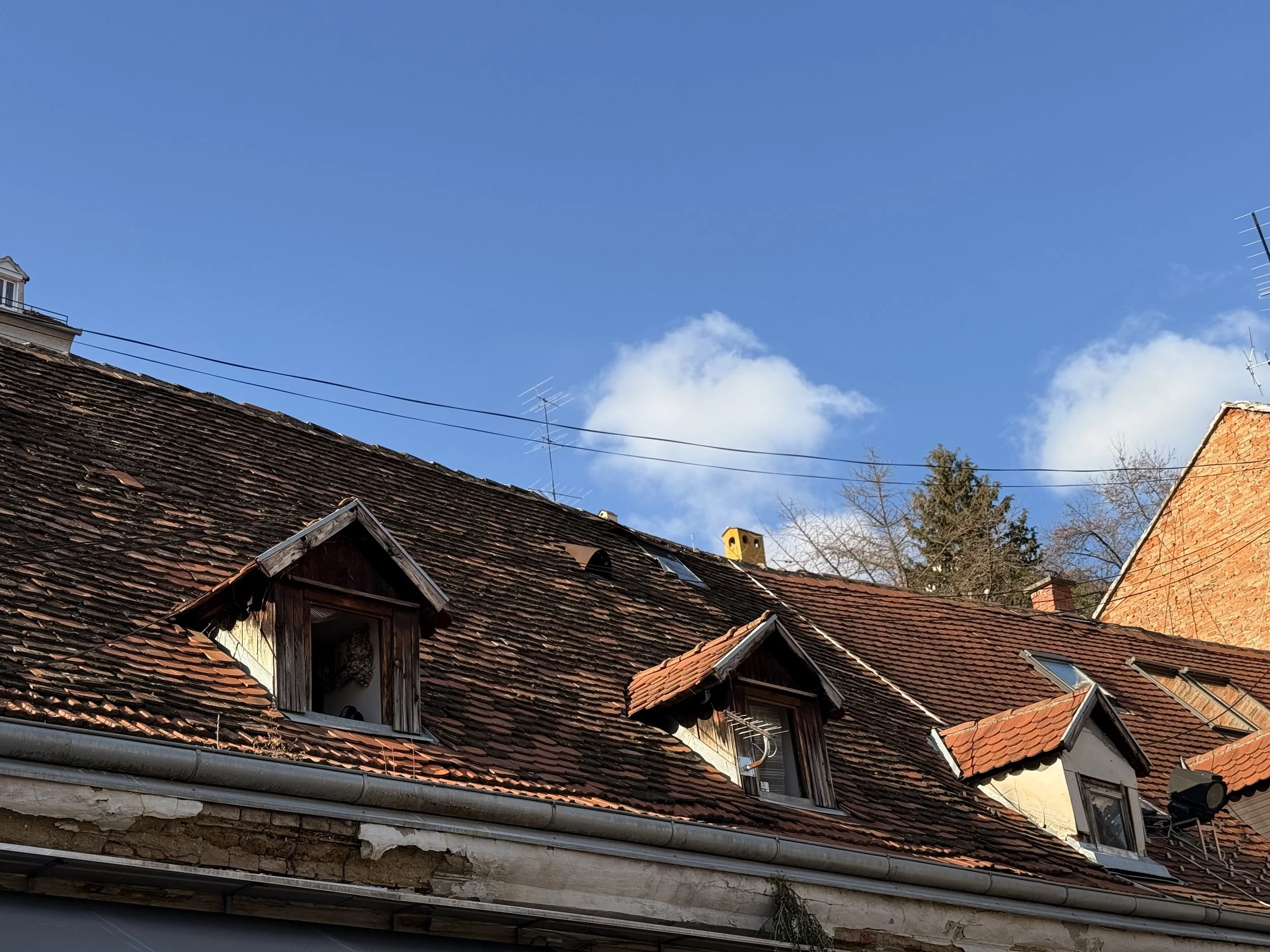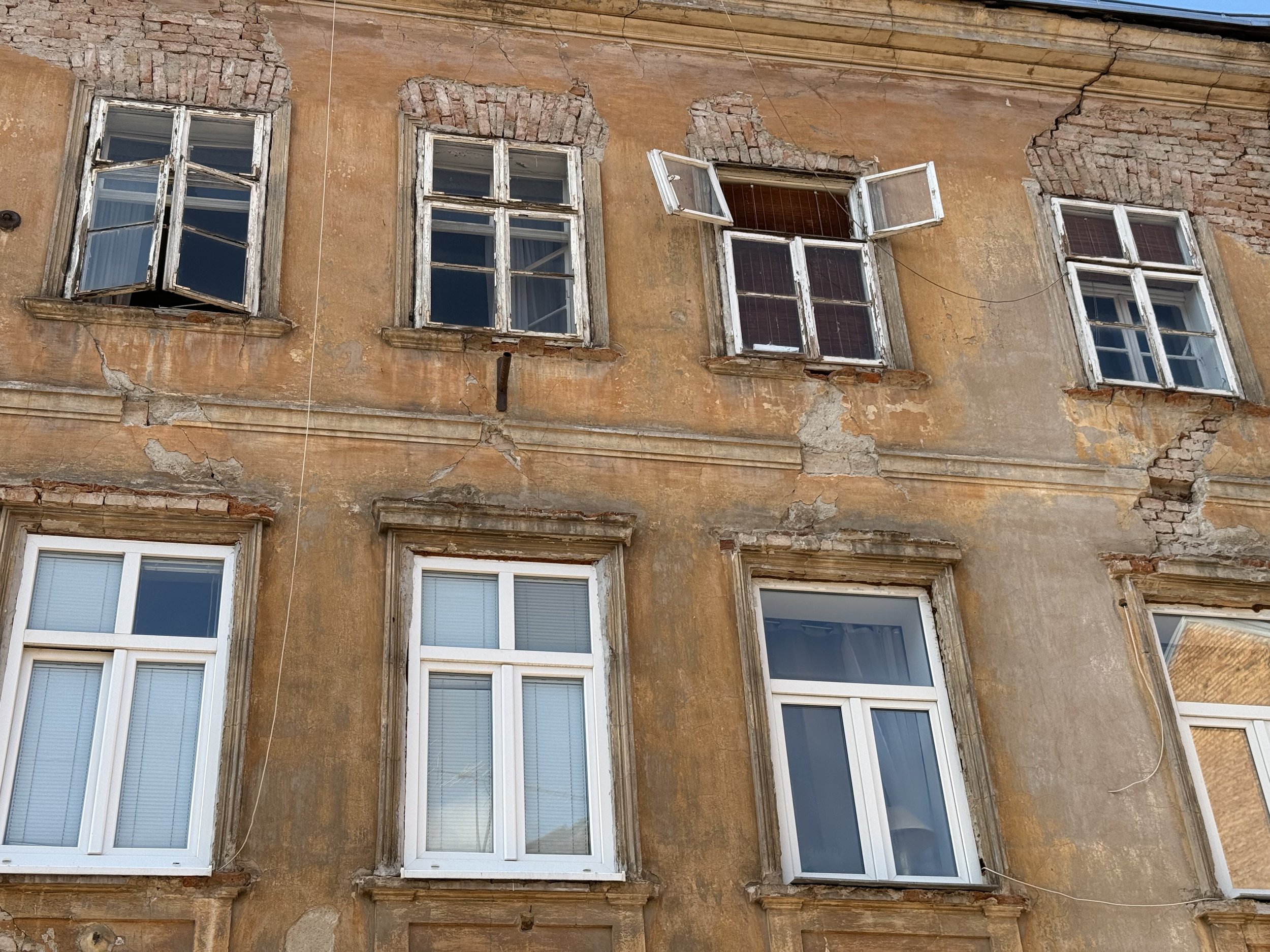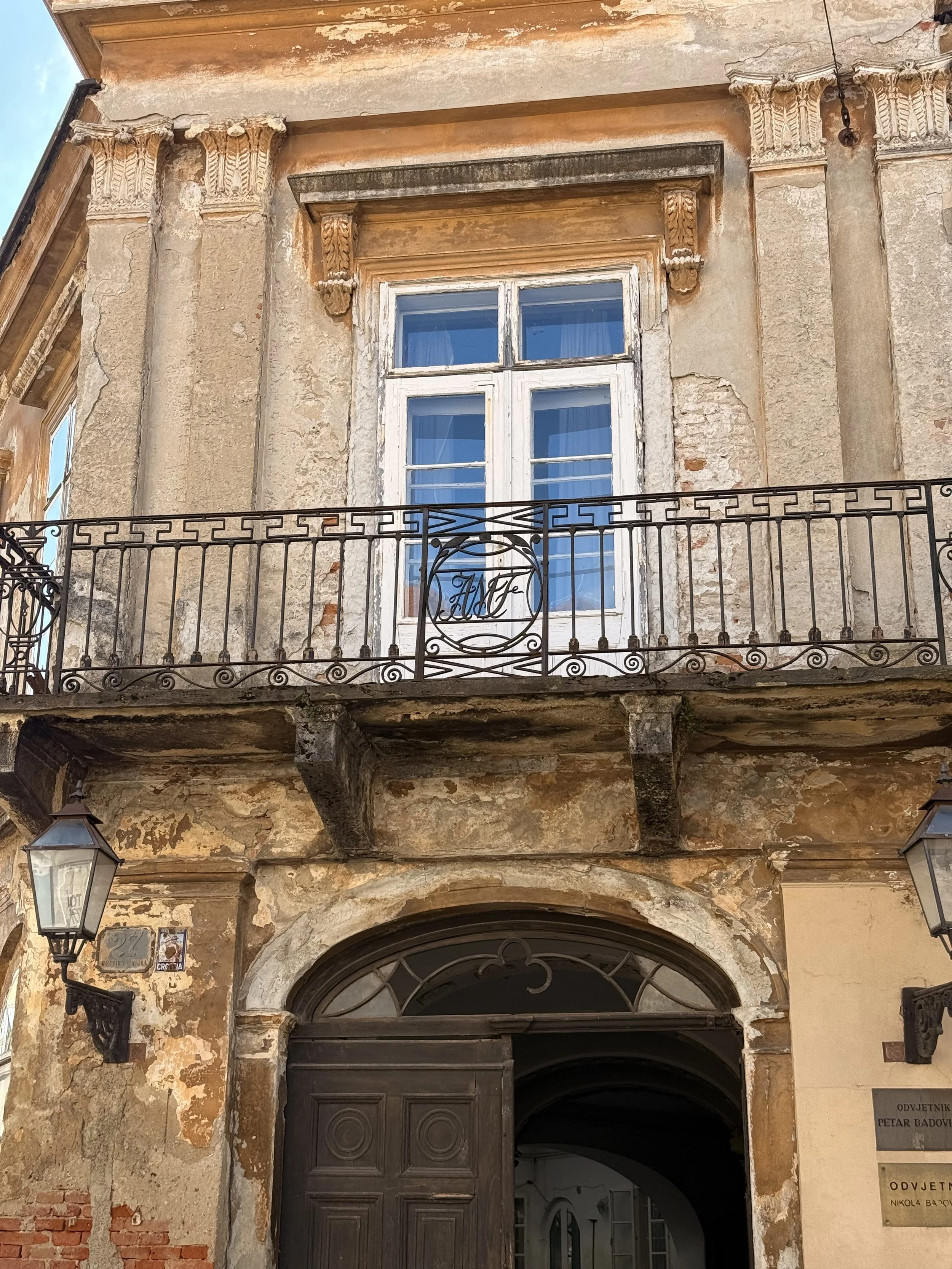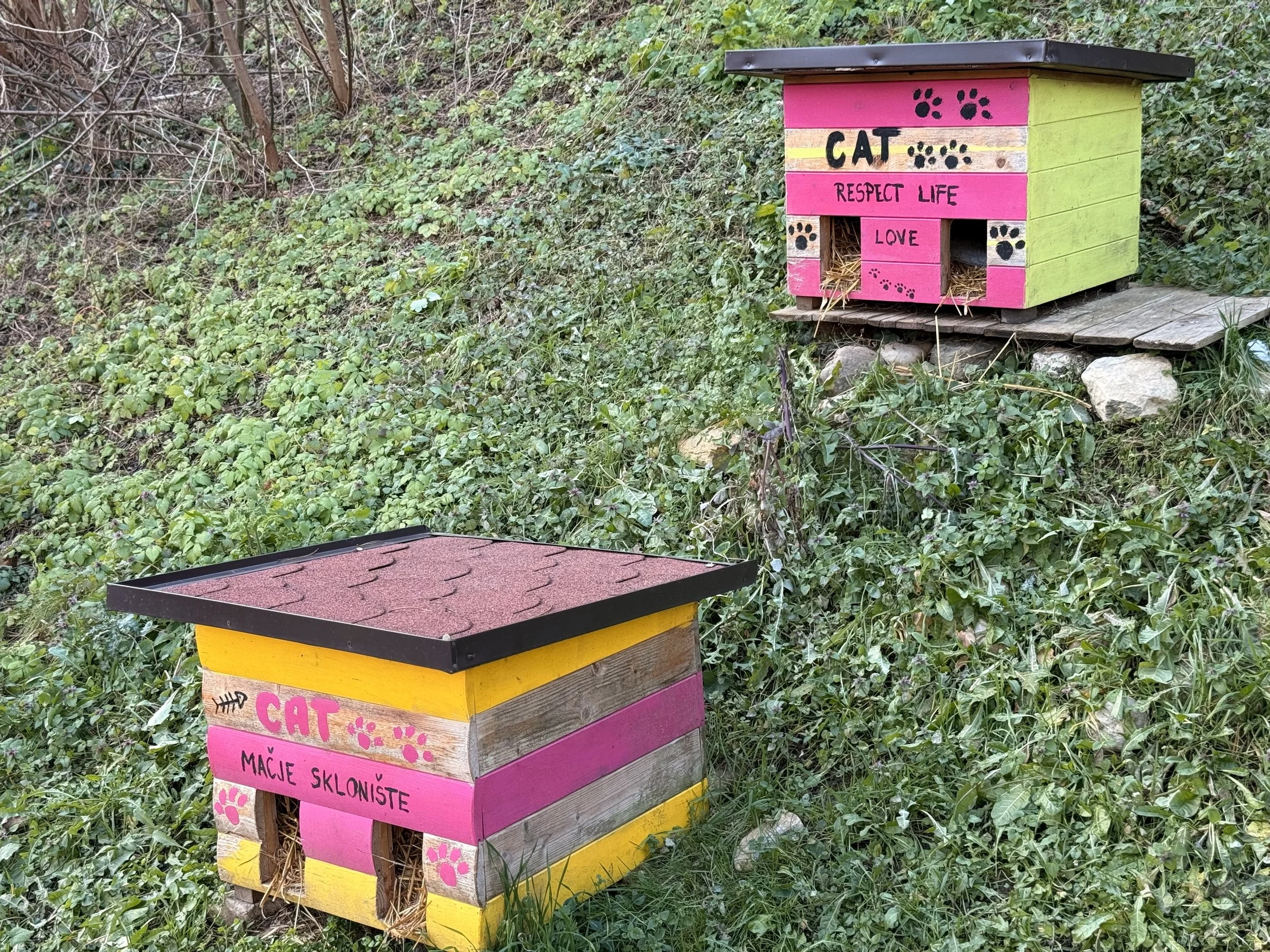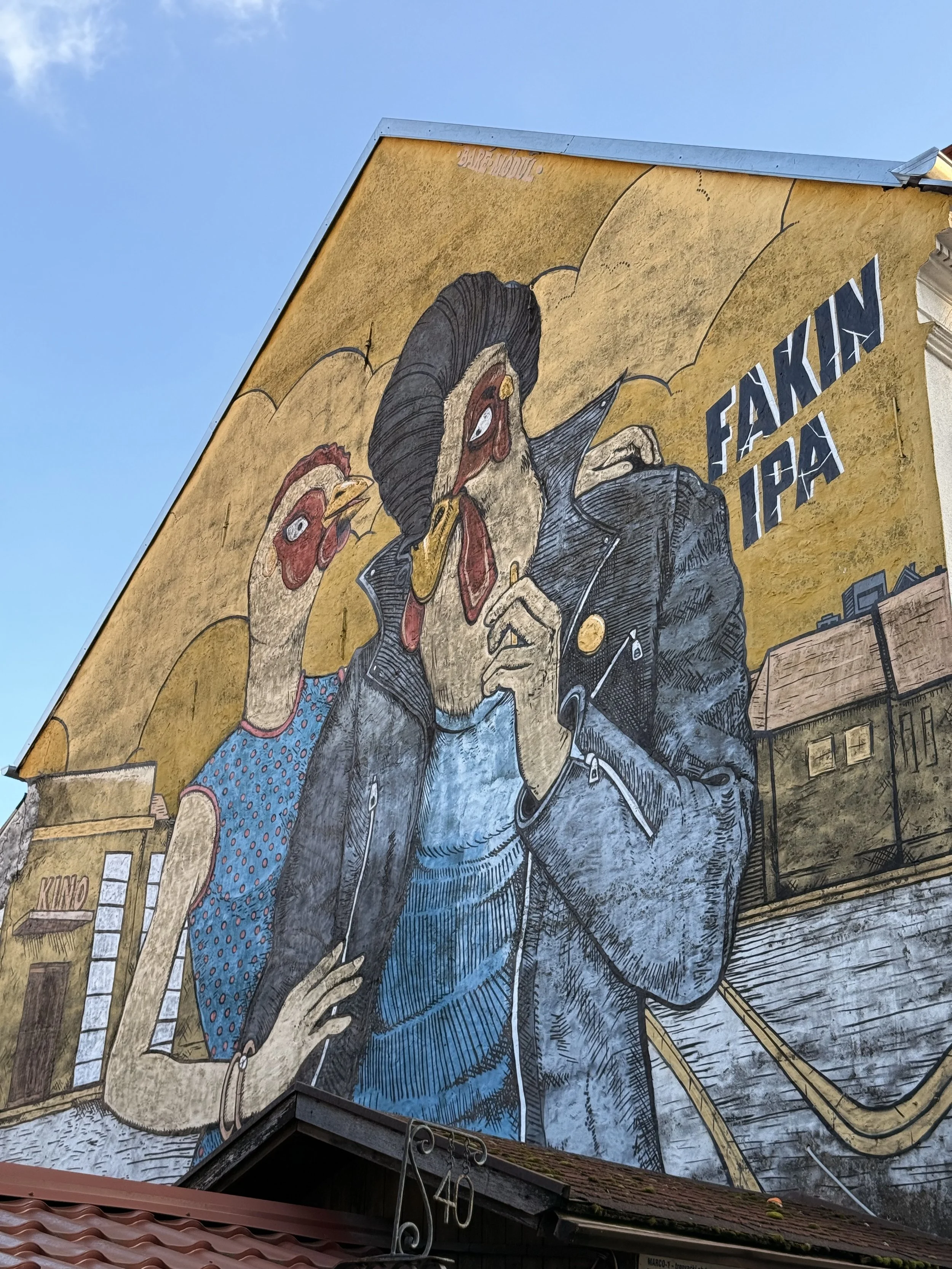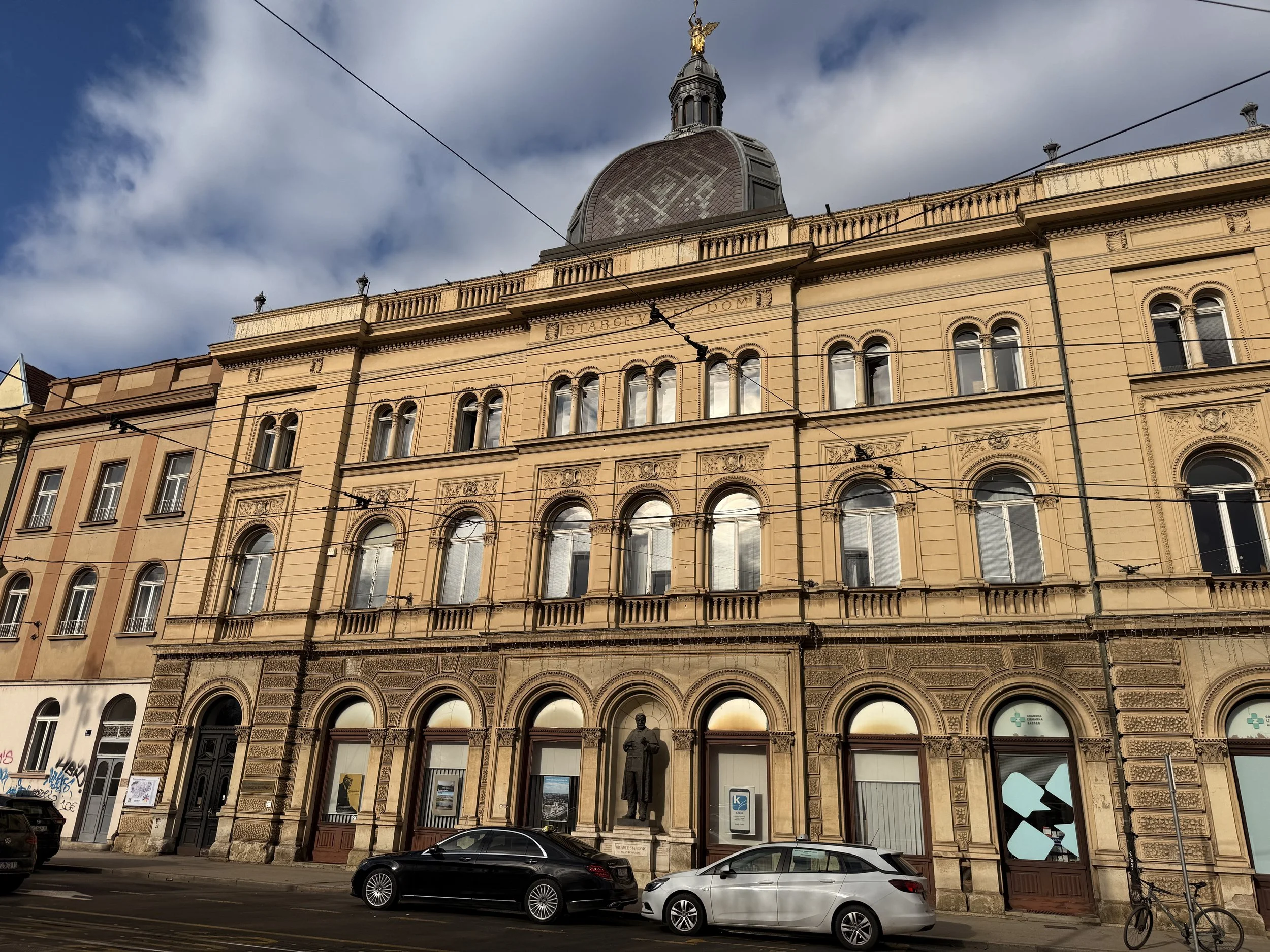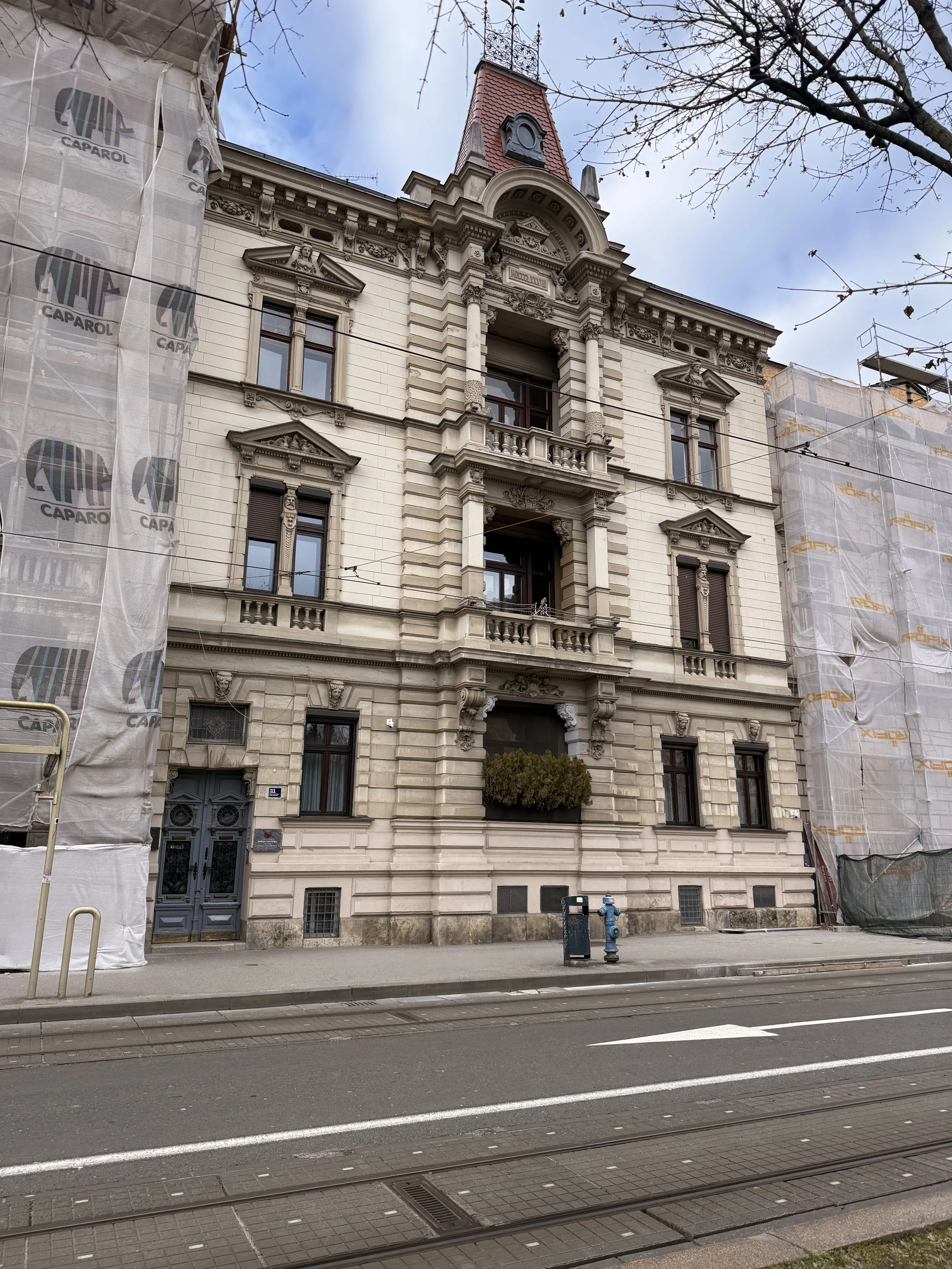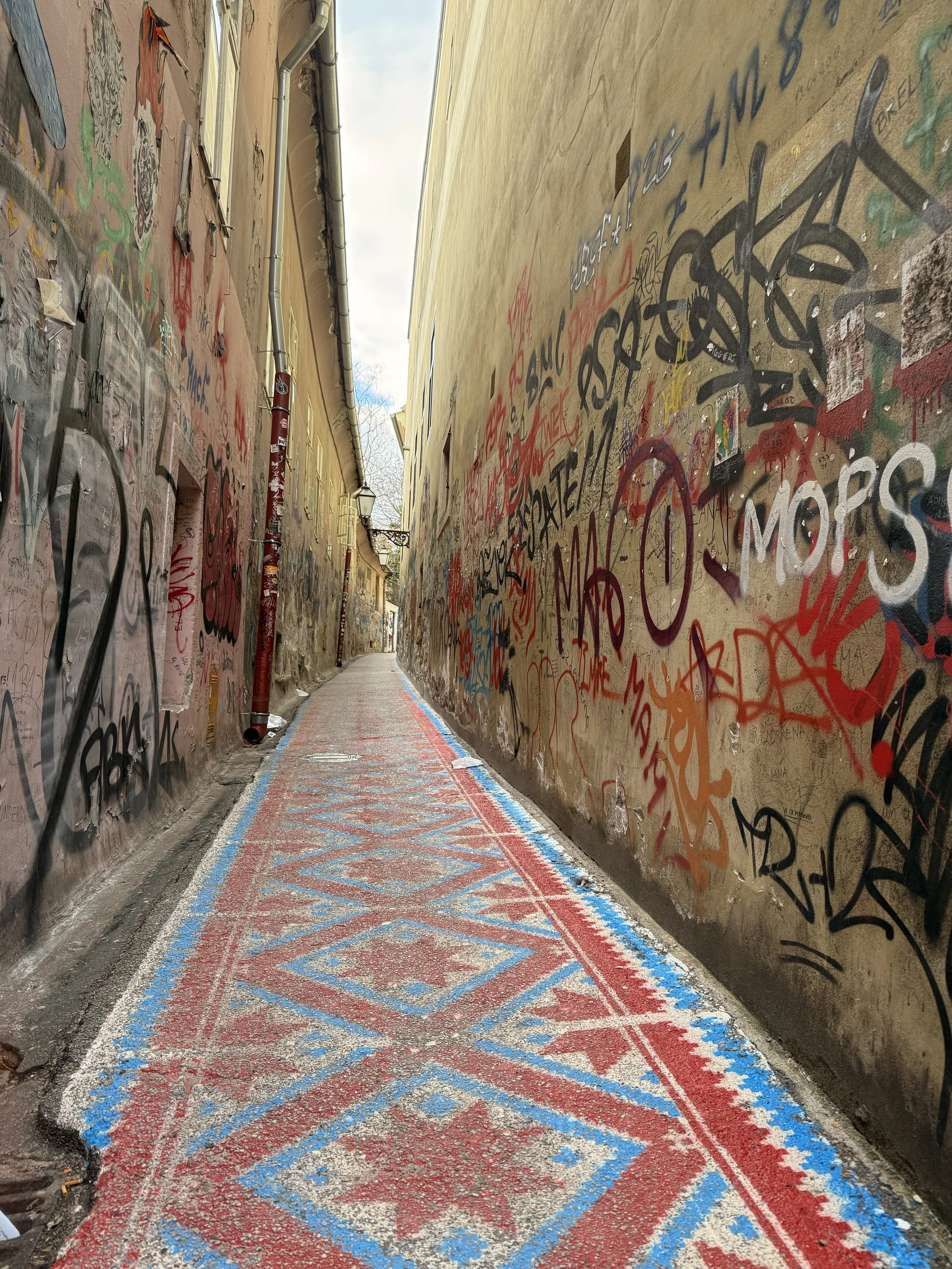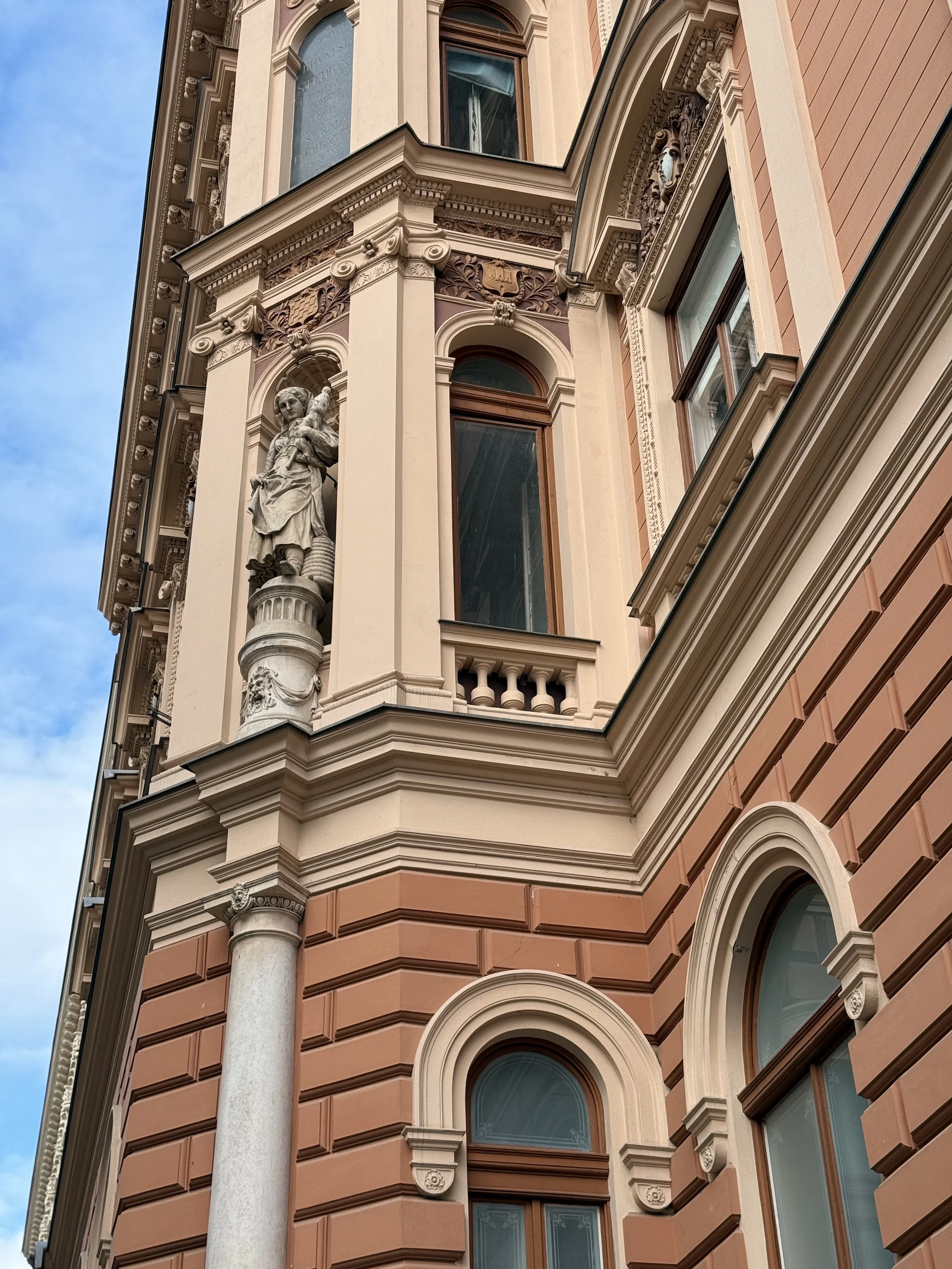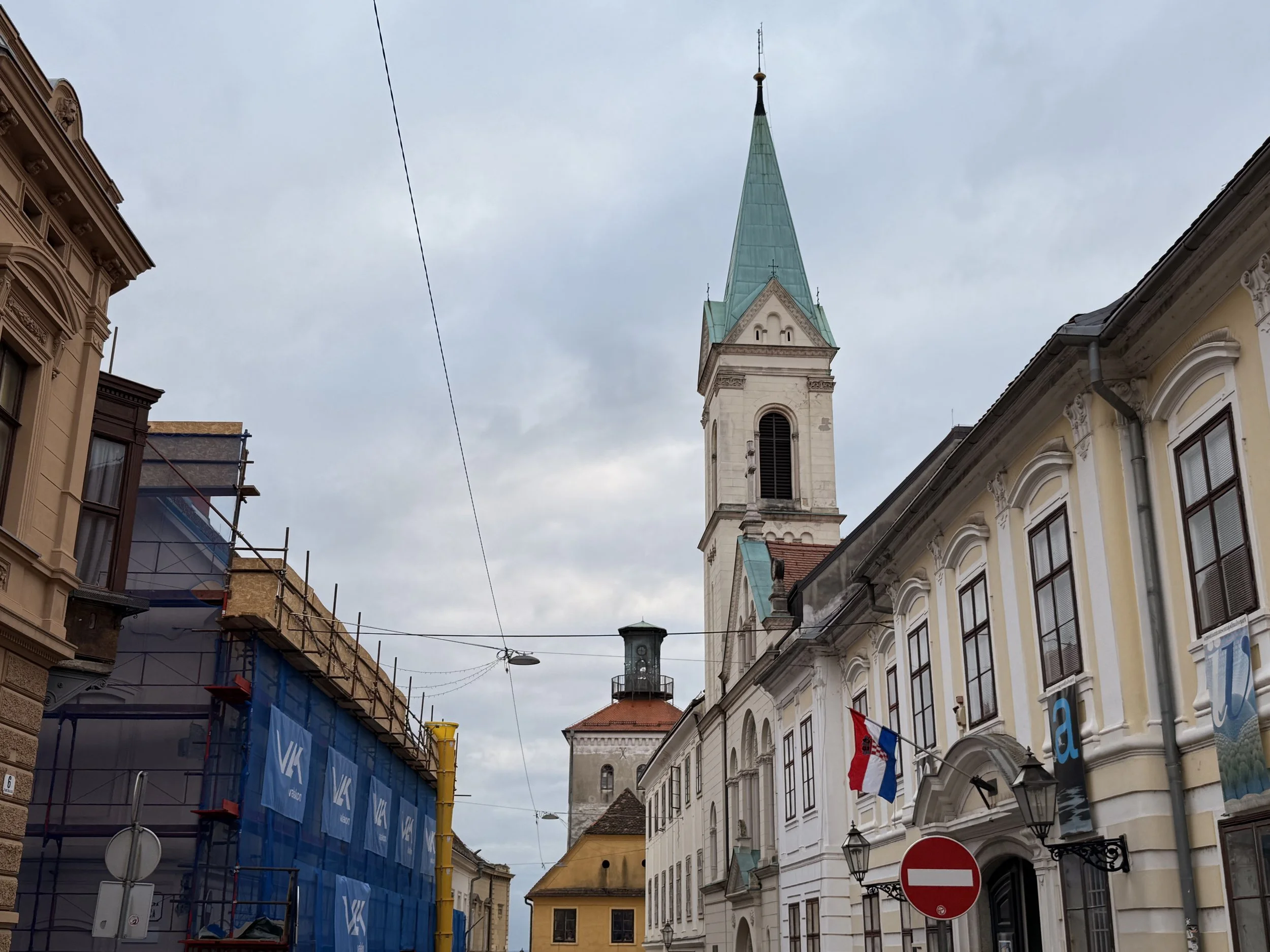Exploring Zagreb, Croatia
Time needed in this city: 3-4 nights
I’ll admit, Zagreb was more on the bottom of the list of places I’d visit in the world, much less in Croatia. However, after spending two full days here, I see why it’s a place you need to explore once in your life. Just walking the streets of the city show a storied history of it being a playground for the wealthy in the late 1800s - 1930s with beautiful baroque and art deco architecture, the affect of the wars from the 1940s - 1990s, the restoration and revitalization of the early 2000s, and the aftermath of the earthquake of 2020. I left there with a much deeper appreciation for the capital of the country.
Note that there are three main parts to Zagreb: Donji Grad (upper town), Gornji Grad (lower town), and Zagreb (city center). This will help you plan your days better when doing walking tours or in general, getting around the city.
The below information is a complete guide of the best places to stay, the top rated places to dine and drink, and all there is to see and do. We’ve also included transportation tips, as well as a summary of the history of this beautiful city!
Jump To:
Where to Stay
Hotel Esplanade (Donji Grad)
According to their site, “Opened in 1925 as a refuge for passengers from the Orient Express, the über-stylish Esplanade Zagreb Hotel is an architectural gem. Located within easy reach of key attractions, the city’s most iconic hotel combines art deco glamour with every contemporary convenience. Long-established as a haven for A-List movie stars, politicians, singers and artists, the hotel’s fairytale exterior and gracious guest accommodation make it easily the most prestigious hotel in Zagreb.” You can find a list of celebrity guests, here.
When WWII was upon the world and until 1945, the hotel became the headquarters of Gestapo and Wehrmacht. It would go on to take the hotel nearly 20 years to recover from that time period, serving as a public kitchen until the early 1960s. In 1964, it would all change - they joined the Inter-continental hotel chain and the celebrities came flocking again.
Then, nearly 30 years later in 1991, Croatia proclaimed independence and the war started. The hotel became headquarters for journalists and also accommodated its first group of refugees from Vukovar. Most of the 70 refugees left within several weeks however, one stayed behind a a nurse who is still living at the hotel to this day! Still, the hotel suffered with lack of reservations during this time period. It would take about three years to renovate it (again) to attract people to it.
Today, the “who’s who” grace the lobby bar, its restaurants, and its rooms once again.
OUR EXPERIENCE: We stayed in the Deluxe Suite, which was about $750 for three nights. It was well-worth if for us, since we work evenings. The bed was heavenly!
We also took advantage of the spa - try the magic honey and the ginger therapy ones. Both were so relaxing for us!
While Zinfandel’s was closed for renovations, Le Bistro and Esplanade 1925 were both open. As we learned the hard way, Le Bistro needs reservations in advance however, the lounge and cocktail bar does not and it has a wonderful food and drink menu! We highly recommend the gluten-free Štruklji, which is the Croatian name for “white lasagna”, and is the chef’s signature dish. It is unbelievably amazing. We also recommend the tea service and cocktails.
Other recommendations - Zagreb
Other recommendations - Donji Grad
Other recommendations - gornji Grad
Where to Dine & Drink
Balon
The classic cuisine served here is inspired by the Mediterranean and features some original touches by the chef.
Bekind
Serving burgers and soups.
Bez Glutena
A gluten-free grocery store.
Boban
Homey Italian restaurant featuring a traditional menu, an extensive wine list & alfresco seating. NOTE: They serve gluten-free pasta.
Boteko Latin Street Food
Per their site, “We offer you original dishes from Latin America, handmade with products that come from Latin America, more precisely from Brazil.”
Dubravkin Put
A Michelin star restaurant and wine bar, serving Mediterranean cuisine.
Gallo
Located in the basement of the “Castellum Centar”, this elegantly decorated restaurant serves cuisine based around Mediterranean- and Italian-inspired fish dishes, alongside homemade pasta and highly enticing desserts.
Heritage - Croatian street food & shop
Just as the name describes it - Croatian street food. It has amazing ratings!
Japanski restoran Tekka
A small Japanese restaurant with a modern feel and an open-view kitchen that allows guests to watch the chefs at work. Traditional Japanese specialities such as nigiri, uramaki, hosomaki and sashimi are to the fore, as well as tempura and teppanyaki and other Asian options including stir-fries.
Kai Street food
Per their site, “Get ready for a relaxed and fun atmosphere with street food stalls from all over the world!”
Kata Brunch
Kod Pere
Serving Mediterranean fare with many risotto, seafood, meat, and soup dishes to choose from.
Konoba Didov san
Konoba Mašklin i Lata
Per their site, “In our tavern, we serve fresh fish, top wines and seasonal specialties every day. Stop by and check out what's on offer for the week and enjoy the ambiance of a Dalmatian tavern in the very center of Zagreb!”
Le Bistro Esplanade
Per their site, “Home to the legendary ‘Esplanade Strukli’ Le Bistro celebrates a wide range of seasonal local produce such as Istrian truffle, sea asparagus and strawberries and fuses traditional Croatian cuisine with French panache showcasing the hotel’s iconic art deco heritage with featuring a glazed seating area and beautiful terrace.”
Market Street Food & Drinks
Serving traditional Croatian cuisine with a twist.
Noel
Noel is a tribute to Croatia’s stunning coastline, inspired by the flavors and ingredients from over 1,200 islands dotting the Adriatic Sea, including Istrian and Dalmatian cuisine. It continually earns its Michelin star.
Pod zidom bistro
Per their site, “Pod Zidom Bistro is an upmarket bistro focusing on high-quality fresh ingredients and local wines. For many years, Pod Zidom Bistro has been popular among locals but it has also been internationally recognized and recommended by the prestigious Michelin Guide since 2019. “
Restaurant HAS
Hip, intimate venue serving imaginative seafood & meat dishes, plus desserts, craft drinks & wine.
Restaurant Konoba
A more touristy spot, they serve Italian food.
ROOTS
Casual option offering fruit & veggie juices, plus smoothie bowls, light bites & unique cocktails.
Saralee’s Thai Street Food
A thai food place with patio seating.
Theatrium by Filho
The extensive menu features classic French and Italian dishes alongside more creative options that pay tribute to local cuisine. Starters include fresh fish from the Adriatic, while the Beef Wellington is considered to be one of the chef’s specialities.
Torero
Situated in the oldest, most visited part of Zagreb, this quiet, well-run restaurant welcomes guests with an entire wall covered with plants and flowers that symbolize the Medvednica - the mountain chain to the north of the capital that inspires the cuisine served here. It uses all five senses for a full meal experience.
torikaya ramen bar
They serve ramen and other traditional Asian dishes in a laid back setting.
Vis a Vis Vincek
A 100% gluten-free bakery and cafe.
VODNJANKA
Serving Istrian cuisine.
Zinfandel’s
A green Michelin starred restaurant, it is situated in the Hotel Esplanade, which dates back to 1925 and is one of the most luxurious hotels in Zagreb, Zifandel's cuisine has been overseen by chef Ana Grgić for the past ten years. She reinterprets Mediterranean traditions in a creative and personalised style, with a focus on local, seasonal ingredients.
Things to See & Do
Day Trips
Best of ISTRIA: Amphitheater PULA + ROVINJ + HUM or POREČ
Explore the Croatian highlights Istria—a scenic peninsula spanning three countries—during this full-day, private and customizable tour from Zagreb. Start the day with front-door pickup and drop-off from any location in the capital. Ride comfortably between locations in your own chauffeured and air-conditioned vehicle. Bespoke itineraries include three destinations, from medieval-era Hum to Pula’s first-century Roman theater.
Day trip to Nin and Zadar
Check out two of Croatia’s most beautiful places on this day-tour from Zagreb. You’ll visit both Nin and Zadar and explore them with your small group and guide. You’ll visit a salt factory, Queen’s beach with its healing mud, some beautiful churches, and hear stories about the history and culture from your personal guide.
Ljubljana and Bled Lake - small group - day tour from Zagreb
Pack in two of Slovenia’s most popular places into one day with this full-day tour of Ljubljana and Bled from Croatia. With round-trip transport form Zagreb included, it’s easy to make your way to see the Ljubljana old city center, Ljubljanica River’s Triple Bridge, Bled Castle, and Lake Bled. Tour both cities with a guide, and then use your free time to explore on your own.
Ljubljana, Postojna Cave & Predjama Castle
Visit two highlights of Slovenia on a day trip from Zagreb to the capital city of Ljubljana and the Postojna Caves. Go underground into karst tunnels and passageways, and ride a narrow-gauge train through the cave’s interior. Then visit the beautiful Predjama Castle before taking a walking tour of Ljubljana’s historic center. This full-day Slovenia tour includes pickup and drop-off at selected hotels as well as all activities, and it’s limited to eight people for a personalized experience.
Opatija, Rijeka, Trsat tour from Zagreb
Spare time in Zagreb? Then widen your sightseeing to Croatia’s northern coast with this private Opatija and Rijeka day trip. Customize your itinerary around your preferences, and headfirst to Opatija, dubbed the ‘Pearl of Adriatic.’ Soak up the atmosphere, flower-line promenades, and Habsburg-era architecture of this riviera town and then explore medieval seaside Lovran and hilltop Trsat Castle at Rijeka. Private air-conditioned transport, private guide and hotel pickup and drop-off included.
Plitvice and Rastoke day trip
Discover the beauty of Plitvice Lakes without having to rely on public transport schedules with this hassle-free day trip. Following a Zagreb pickup, head to the pretty village of Rastoke and learn about the history of Croatia. The trip continues to Plitvice Lakes National Park for a guided walk along scenic paths and boardwalks, and plenty of time to take photos of this world-renowned UNESCO World Heritage Site.
Samobor & Samobor Castle
Enjoy the scenery on the drive from Zagreb to Samobor; since all transportation is provided with this tour, you can focus on enjoying your experience. Explore the castle with a private walking tour, then take a break for a classic local cake in town. Spend some free time exploring on your own with some suggestions from your guide before returning to Zagreb for convenient drop-off.
Trakoscan Castle and Varazdin Private Tour
Discover two of northern Croatia’s historical highlights on a private Trakoscan Castle and Varazdin day trip from Zagreb. Venture north through rural Croatia and visit the hilltop 13th-century Trakoscan to see its displays of art and weaponry, and admire its gardens and lake. Then, explore the town of Varazdin, dubbed ‘Little Vienna’ for its baroque architecture, and known for its medieval castle, churches, and cobbled squares. Private air-conditioned transport, plus hotel pickup and drop-off included.
Historical Exploration
Communism & Croatian Homeland War Tour
Get to know Croatia’s recent history on this group walking tour. In the company of your guide, stroll through Zagreb and learn about the city’s experiences of World War II, Yugoslavia and communism under Tito, and the war in the 1990’s. Visit WWII-era tunnels and see a multimedia exhibition about war.
Glavni Kolodvor
An 1890 act of the Royal Hungarian Government authorized the building of the main station and maintenance shop in Zagreb. Construction of the 612 ft.-long neoclassical style station building began in 1891 and was overseen by Hungarian architect Ferenc Pfaff - it was one of the largest buildings built in the 19th century. Sculptural works were undertaken by the Hungarian sculptor, Vilim Marschenko. The station opened on July 1, 1892.
TIP: Walk by it to see it, but there is no point in going inside. It’s a blank hall with a lot of graffiti.
Lotrscak Tower
Located in Zagreb’s Upper Town, Lotrscak (“thieves bell”)Tower dates all the way back to the 13th century and is one of the main landmarks in the city. The tower was constructed to help protect the southern gate to the town and today, merely offers amazing views of the city.
FUN FACT: For the last 100+ years, a cannon shot has rung out at midday to help mark the passing of the hour and allow churches around the city to synchronize their bells.
Zagreb City Museum
Zagreb City Museum was established in 1907 by the Association of the Brethren of the Croatian Dragon. It is located in a restored monumental complex (12th-century Popov toranj, the Observatory, 17th-century Zakmardi Granary) of the former Convent of the Poor Clares, of 1650.
The Museum showcases cultural, artistic, economic and political history of the city, spanning from the prehistory, to the Roman finds, to the modern period.
OUR EXPERIENCE: If you can only get to one museum in Zagreb, make it this one. They do such an amazing job of creating a “time capsule” from the beginning of time, on up to the war in the 1990s. The curation of objects is outstanding.
Zagreb Mirogoj Cemetery
The Mirogoj Cemetery was built on a plot of land owned by the linguist, Ljudevit Gaj, purchased by the city in 1872, after his death. It was inaugurated on November 6, 1876.
The construction of the arcades, the cupolas, and the church in the entryway began in 1879 and completed in 1929.
Zagreb Rocket Attacks Memorial Centre
The Memorial Centre of the Rocket Attacks on Zagreb 1991/1995 was opened on May 2, 2013 in memory of the civilians who were killed and injured in the aggression on the capital city of Croatia during the Homeland War. The Centre was opened on the 18th anniversary of the rocket attack on Zagreb, which was launched on May 2, 1995 by Serb aggressors, as an act of retaliation against Croatia, in the aftermath of the successfully conducted military operation “Flash”.
The Memorial Centre’s permanent exhibition showcases documentary films, newspaper articles and pieces of the rockets that landed on the Children’s Hospital, the Croatian National Theatre and other civilian institutions in Zagreb. Visitors of the Centre will also have the opportunity to view artefacts, photographs and documents that stand witness to this barbaric attack on civilians, as well as to the attempt at killing the Croatian political leadership in a rocket attack which targeted Banski Dvori in the Upper Town in 1991.
Religious History
The 13th-century St Mark’s Church is one of Zagreb’s most emblematic buildings. Its colourful tiled roof, constructed in 1880, has the medieval coat of arms of Croatia, Dalmatia, and Slavonia on the left side; and the emblem of Zagreb on the right. The Gothic portal, composed of 15 figures in shallow niches, was sculpted in the 14th century. The interior contains sculptures by Ivan Meštrović, though the church is open only at Mass times.
Stone Gate Chapel
Stone Gate is the only remaining gate of Gradec that leads from the Upper Town to the picturesque Radiceva Street. However, what makes it a “must-see” is the open-air chapel that resides inside the gate. According to legend, there was a fire in 1731 that destroyed the (then) wooden gate. However, the fire peculiarly left a painting that was hanging inside the gate, “The Virgin and Child,” completely intact.
The painting in now enshrined inside Stone Gate and surrounded by an open air chapel. People come to pray and give thanks to the Virgin Mary by lighting candles, leaving flowers, and mounting engraved plaques on the walls. As one of the top things to do Zagreb, visitors can also light a candle, admire the plaques, and pause to pray in one of the pews.
Zagreb Cathedral
The Cathedral of the Assumption of Mary (Zagreb Cathedral),was built in the year 1093 when the Diocese of Zagreb was established, though was rebuilt in the 13th century. In the 15th century, it was surrounded by fortifications, some of which still remain, though heavily damaged by earthquakes in 1880 and again in 2020. As of 2025, they are still renovating as one of the spires was leaning after the last earthquake.
FUN FACT: The chandeliers reportedly came from a Las Vegas casino.
The Arts & Sciences
Archeological Museum
The Archaeological Museum in Zagreb is the direct successor of the former National Museum, the oldest museum institution in the capital city, which began in 1846. Since 1866, with the approval of the Rules of the National Land Museum, the museum has been operating under the protection of the Parliament and is divided into Natural History and Archeology departments. Since 1940, with the formal termination of the existence of the National Museum, the Archaeological Museum has been operating independently. Since 1945, the Archaeological Museum in Zagreb has been housed in the Vranyczany-Dobrinović Palace.
It houses nearly 450,000 artifacts, including an Egyptian collection, a Numismatic collection, and Greek and Roman collections.
Art Pavilion
In May 1896, a Millennium Exhibition was to be held in Budapest, celebrating 1,000 years of Hungarian statehood, and artists from what was then Kingdom of Croatia-Slavonia were invited to attend. Croatian artists decided to present their works in a purpose-built Pavilion, constructed around a prefabricated iron skeleton so that it could easily be shipped to Zagreb after the exhibition.
Austrian architects Fellner & Helmer (who earlier designed the Croatian National Theatre building) were hired to design a new version of the building based on the iron skeleton. The construction went on from 1897 to 1898 and the Pavilion was officially inaugurated on December 15, 1898 with a large exhibition showcasing works of local artists called “Croatian Salon”.
In 2006 - 2013, the glass roof of the Pavilion was renovated and the lighting system was replaced.
In 2020, the Pavilion was damaged by a strong earthquake and is still closed for renovations as of January 2025.
Arts and Crafts Museum
Established in 1880, the museum was devised with the aim of creating a collection of models for master craftsmen and artists to reinvigorate the production of everyday use items. The strategy of the museum's activity was focused on preservation of traditional crafts, as well as creation of a new middle class aesthetic culture. Therefore, in 1882, the Crafts School (today Applied Art and Design School) was founded alongside the museum.
Botanical Gardens
The Zagreb Botanical Gardens was founded in 1889 by Antun Heinz, Professor of the University of Zagreb. It was opened to public in 1891 and is part of the Faculty of Science. Covering an area of 12 acres, it is home to over 10,000 plant species from around the world, including 1,800 exotic ones. It has large ponds for aquatic plants, which was the inspiration for some of Slava Raškaj's most notable works.
Croatian Museum of NaÏve Art
The Croatian Museum of Naïve Art is a fine art museum dedicated to the work of naïve artists of the 20th century. It consists of over 1,900 works of art - paintings, sculptures, drawings and prints, mainly by Croatians but also by other well-known international artists in the genre. It is located on the first floor of the 18th-century Raffay Palace.
Croatian National Theatre
The first city theatre opened in 1834, housed in the present-day Old City Hall, which was first established as the Croatian National Theatre in 1860. In 1861, it gained government support putting it on par with many other European national theatres. In 1870, an opera company was added to the theatre and in 1895, it moved to the new purpose-built building on Republic of Croatia Square in Zagreb's Lower Town - Austro-Hungarian emperor Franz Joseph I was at the unveiling of the new building, during his visit to the city.
Croatian State Archives
The Croatian State Archives trace their origin to a 1643 decision of the Croatian Sabor in which the Kingdom's treasurer, Ivan Zakmardi, is instructed to create an inventory of all the laws, charters, and other documents. This was followed by the commission to construct a special chest, at the Kingdom's expense, which would house the most important documents in the aforementioned inventory. The chest only had symbolic meaning, since it could only house a negligible amount of documentation, and was located on the grounds of the Bishopric of Zagreb. The number of laws and regulation were subsequently passed in relation to archiving documents.
The Croatian Parliament named Ladislaus Kiraly as the first archivist of the kingdom in 1744, transferring the chest and the rest of the documentation to the Saint Mark's square in 1763.
Ethnographic Museum
Founded in 1919, the Ethnographic Museum is located in the Secession building of the one-time Trades Hall of 1903. It holds about 80,000 items, classified in three cultural zones: the Pannonian, Dinaric and Adriatic, which shows the traditional way of life in Croatia - gold embroidered costumes and ceremonial dresses, music instruments, furniture, cooking utensils and tools are just some of the artifacts.
In addition, the reconstruction of farms and rooms gives an insight into the traditional life of farmers and fishermen. The Ljeposav Perinić collection consists of a number of dolls, dressed in traditional costumes. The museum features permanent exhibitions relating to life in Kosovo during the Ottoman era and focuses on a circle of life theme, with displays focusing on birth, life, death and heritage.
Divided among two buildings, visitors will see rooms furnished just as they would have been during Ottoman times, as well as a traditional “room of birth” and “room of death.” Other rooms display traditional jewelry, costumes, pottery, weapons and other tools.
Mimara Museum
Housed in an imposing neo-Renaissance former school is the eclectic, globe-trotting private art collection of Ante Topić Mimara, who donated over 3,750 priceless objects to his native Zagreb (even though he spent much of his life in Salzburg, Austria). Inside, you'll find Ptolemaic glassware from Alexandria, delicate jade and ivory Qing-dynasty ornaments, ornate 14th-century wooden crosses encrusted with semiprecious stones, and a vast European painting collection with works by Caravaggio, Rembrandt, Bosch, Velázquez, Goya, Renoir and Degas.
Museum of Broken Relationships
The Museum of Broken Relationships is a museum dedicated to failed love relationships. Its exhibits include personal objects left over from former lovers, accompanied by brief descriptions.
The "museum" began as a traveling collection of donated items. Since then, it has found a permanent location in Zagreb. It received the Kenneth Hudson Award for Europe's most innovative museum in 2011.
Museum of Contemporary Art
Opened in 2009, The Museum of Contemporary Art showcases contemporary art from Croatian artists.
Museum of Lost Tales
The Museum of Forgotten Stories - a house of miracles from Croatian folklore, is a unique place where the rich, intangible heritage of Croatia is interpreted (presented) through the author's concept of a multimedia artist - Zdenko Bašić.
In an area divided into six rooms and thematic units, visitors can walk through the shaped scenes and models that are filled with living images, smells, and experiences. You will find traces of fairies, witches, barbarians, dragons, water people, mogu, and many other creatures.
NOTE: You may want to contact them ahead of time as even if it says they are open, they are not always open. Sadly, we didn’t get to explore it.
National Museum of Modern Art
Since 2021, the National Museum of Modern Art holds the most important and comprehensive collection of paintings, sculptures, and drawings by 19th and 20th century Croatian artists. The collection numbers around 10,000 works of art, housed since 1934, in the historic Vranyczany Palace in the centre of Zagreb, overlooking the Zrinjevac Park. A secondary gallery is the Josip Račić Studio at Margaretska 3.
Nikola Tesla Technical Museum
Officially opening to the public on the January 14 1963, Božo Težak, a professor of at the Faculty of Science, University of Zagreb decided the country needed a museum celebrating technological advances in Croatia.
Though the famous inventor had no part in this museum, in June 2015, the City Assembly of the City of Zagreb decided to rename the Technical Museum after Nikola Tesla.
Strossmayer Gallery of Old Masters
The Strossmayer Gallery of Old Masters is a fine art museum exhibiting the collection donated to the city by Bishop Josip Juraj Strossmayer in 1884. It includes around 4,000 works, of which some 250 are on display, with the remainder in storage, or on display at other museums or gallery institutions in Croatia.
Zrinjevac Meteorological Column
In 1884, the physician and amateur meteorologist, Adolf Holzer, built a meteorological column on the north side of Zrinjevac, outfitted with scientific instruments to record temperature, humidity, and air pressure over time.
Made of Istrian marble and designed by architect Hermann Bollé, this landmark collected data used for his studies, which were viewed as revolutionary at the time, focusing on better understanding the impact of a changing climate on human health.
Today, more than 130 years after its construction, these extremely accurate, German-made instruments are no longer used for official measurements, but they continue to do their jobs, and people often stop by to check in on the local conditions.
Unique Experiences
world’s shortest funicular
Built in 1890, the world’s shortest funicular initially used steam-powered engines to lift the car up the 217 feet of track. Its purpose was to access the Upper Town without having to make the climb. It takes less than a minute for the car to ascend from Llica Street to Stossmayer Promenade – at a steep 52% incline.
Zagreb 80’s Museum
Per their site, “The ZAGREB 80’s is dedicated to the past in a new way. Its space is a reconstruction of everyday life in former Yugoslavia.
Walking Tours
Once a flowing river that marked the border between Kaptol and Gradec is now a café-lined pedestrian-only lane stretching from Jelacic Square to Mala Ulica (Little Street).
green horseshoe Park
The Lenuci Horseshoe or the Green Horseshoe is a U-shaped system of city squares with parks in the downtown area (Donji Grad). The horseshoe was conceived in 1882 by Croatian urbanist, Milan Lenuci. The parks were designed between 1883 and 1887 at a time when today's Donji grad formed the southern outskirts of Zagreb. The construction was helped by the efforts to rebuild the city after the 1880 Zagreb earthquake and in 1889, the entire horseshoe was finished—its two ends were connected by the newly built Zagreb Botanical Garden. The park system consists of seven squares aligned on three straight lines. Many museums also exist in this area.
Gric Tunnel
The Gric Tunnel was initially built during WWII as a bomb shelter, spanning 1,150 feet, running through the hill beneath the Upper Town. Shortly after it was completed, it fell into disuse, ccompletely shuttered until 1993 when it hosted Croatia’s first rave.
In 2015, renovation of the Gric Tunnel finally commenced and it reopened to the public in 2016 as a Zagreb tourist attraction. The tunnel is used for special events, like the Advent Christmas Market. It’s a much easier way to get from one side of the town to the other!
Medvednica
Easily accessible by tram from the Zagreb center, Medvednica is an 88 sq. mi. mountainous, forest-covered nature park. There are several intertwining trails for hikers to go for a walk around the woods., waterfalls, a cave, a mine, and a fort. The tallest peak at Medvednica, Sljeme, stands at 3,396 feet and to get there, there’s a Zagerb cable car to bring you to the top.
Veternica is a 23,386 ft. long cave with a large portion unexplored and only 1,250 ft. available to visitors - much of it being a bat cave for bat enthusiasts. It is also an archeological site where the remains of several kinds of prehistoric animals, as well as human, have been found.
Tkalciceva Street
Centuries before today's street emerged, the route of Tkalčićeva Street was covered by the Medveščak creek, which had been the center of Zagreb industry since the early days of the city, spawning numerous watermills. The watermills caused the development of Zagreb industry, leading in turn to the construction of Zagreb's first cloth, soap, paper, and liquor factories. These watermills were often the subject of feuds between the twin cities, Kaptol and Gradec so in 1392, a peace treaty forbade construction of new watermills along the shared city border, between today's southern end of Medvedgradska Street and Ban Jelačić Square, leaving only two mills within the city. Both mills were owned by a Cistercian monastery however, they were both razed during the 1898 covering of the creek. This covering was also layered with gravel to form a real street, which already had homes from the 18th and 19th centuries lining it. It wasn’t until the 20th century that the street was paved.
INTERESTING FACT: At the turn of the 20th century, this street was lined with brothels (every other building was one) as this line of work was legal and well-regulated - it also had to be done discreetly. They operated until WWII.
Wander Gradec and Kaptol
Zagreb Old Town is the melding of two smaller towns: Kaptol (where the Zagreb Cathedral stands) and Gradec, the Upper Town. Dating to the 11th and 13th centuries, respectively, the two towns were once separated by a stream (that has since been diverted and covered). This is where you will go in Zagreb to see the most historic parts of the city.
Wandering the city
As always, one of the best ways to really see the city is wander around!
Zagreb Zoo
Zagreb Zoo was founded in 1925 and is located in Maksimir Park, which is over 200 years old. It houses over 368 animal species with more than 7,182 animals from all continents.
How to Get Around
Getting to/from the airport
Bus
The most inexpensive options is the Croatia Airlines airport bus. Without any stops, it will take you to the main bus station in central Zagreb (at Avenija Marina Drzica 4). They leave every half an hour (or are timed to arrive with flight arrivals at less busy periods) outside the airport terminal. Tickets cost €5.97 and can be bought from the bus driver or online at www.plesoprijevoz.hr where you can also find more details about the bus. Journey time is 35-40 minutes.
Once you arrive at the bus station, you can flag down a taxi to take you to your accommodation or use a tram to complete your journey. Tram lines 2, 5, 6, 7 and 8 are run by the bus station. OR if you don’t have too much luggage, you can most likely walk to your hotel.
NOTE: The return airport transport bus leaves Zagreb Bus Station from 4am to 7.30pm every day.
Rideshare
Uber now exists in Croatia and in Zagreb. You can use the standard Uber app to call for a car, which will meet you outside on the upper level of the terminal building.
Taxi
Taking a taxi from the airport to the city center is about €15-20 – which is much cheaper than it used to be! Taxis wait outside the terminal building.
cable car
Opened in early 2022, Zagreb’s new cable car transports passengers on a 5km route from Gracansko dolje in the north of the city to Sljeme (at a height of 1,030m above sea level) to the top of Medvednica mountain, via intermediate station Brestovac. The total ride from the base station to the top takes 16 to 22 minutes, depending on how fast the system is being operated. 84 gondolas run on the cable car, each with 10 seats, meaning about 1500 people can travel on the cable car every hour.
Going in the winter? Each car is also equipped with outside storage for skis, as it’s possible to go skiing up on Sljeme!
The cable car starts operating at 9am on weekdays and 8am on the weekend. Tickets cost €9.95 one way or €16.59 for a return for adults aged 24+; tickets for those aged 15-24 and seniors 65+ cost €6.64 one-way and €9.95 for a return; children aged 0-15 pay €2.65 one-way or €3.98 return.
Christmas tram - December only
Every December, as part of Zagreb’s Advent Christmas celebrations, a Zagreb tram operates on a short route right through the center of Zagreb. The special “Merry Christmas” tram from 1924, runs on a half-hour circular route from the main square, Trg ban Jelacic (at the intersection with Praska ulica).
The tram operates from 4pm to 7pm on Mondays to Thursdays, from 12pm to 4pm on Fridays, and from 10am to 4pm on the weekend. Departures are every half an hour and tickets can be purchased at the departure point. You may be the recipient of some sweet treats while on board!
fulir electric vehicles - summer months only
As of 2024, during the summer months, electric vehicles will be available for free transportation within the pedestrianized area of the center of Zagreb, called “Fulir”. Similar to the Kavalir vehicles in Ljubljana, these electric buggies will be available every day of the week from 8am to 8pm, and are primarily aimed at the elderly and those who are less mobile. To ride on a Fulir buggy, you must call a driver – click here for more information.
funicular railway
To expedite getting from the New Town to the Old Town and back, this 216 ft. funicular railway is, in fact, the oldest form of Zagreb public transportation as it first started operating in 1890. Visit it for a ride (by Ilica in the Lower Town, or near the Lotrscak Tower in the Upper Town). A one-way ticket costs €0.66, and it can be purchased from the ticket office at either end.
Rideshare
Ubers are widely used in Zagreb - make sure you have the app downloaded and ready to go!
Taxis
Taxis in Croatia are usually more expensive than travelers expect. When you enter a taxi (if you’ve hailed one from a taxi stand/airport/bus station etc), once you’ve stated your destination, make sure the taxi meter is switched on. For more information and for a list of taxis, click here.
tourist buses
Not part of the Zagreb public transport network but undoubtedly of interest to visitors is the hop-on, hop-off Zagreb City Tour tourist bus. There are five tours a day with the starting point being Palmoticeva ulica 2 - just east of the central square Trg ban Jelacic. Tickets cost €20 for adults and €8 for children aged 6 to 13. (Kids 5 and under go free.)
tram system
Trams are the best way to get around the city. There are 15 routes in Zagreb (click here for more), and many stop either at Trg bana Jelacica (the main square) or at the main train station.
HOW TO PURCHASE: To obtain a ticket for a tram, walk to the first newspaper kiosk and ask for a “tramvajska karta” (tram ticket) which is sold singly – obviously, you can buy however many you want. It is also possible to purchase a ticket from the driver – obviously, you will need to board at the very front of the tram. A ticket purchased from the driver costs €0.80.
NOTE: Once you board the tram, you must remember to validate your ticket in the machines – the machines for these are near the very first and very last doors of trams. (Note: in the more old-fashioned trams, there is only such a machine by the front door.) These tickets cost €0.53, and once validated can be used on as many journeys as you need within 30 minutes.
A History Summary
125,000 years ago (from 2024) - Many Neanderthal remains have been found just north of the city.
50,000 - 100,000 years ago (from 2024) - Remains of Mousterian Neanderthals have been found dating from that time.
1300 B.C. - The first permanent, fortified settlement was likely created by the Urnfield culture in this time period. It was at the location of modern-day Priest's Tower and Demeter Street.
1094 AD - The Kaptol settlement was recorded.
13th century - A continuity of urban settlement began.
1217 - The cathedral was consecrated. It would go on to need restoration and rebuulding in 1263 after it was damaged by Mongol raids in 1242.
1242 - Gradec was given a royal charter by Béla IV of Hungary, which granted inhabitants many rights, including self-government. They then built defensive walls and towers around their settlement, in anticipation of a new Tatar invasion.
1334 - The canons of Zagreb established a colony of serfs near their residences, north of Kaptol. This was the beginning of a settlement along the present-day Nova Ves street.
1391 - 1396 - Bishop Ivan had excommunicated, massacred, and even looted the citizens of Gradec for non-payment of the bishop's 16th, which lasted from 1391 - 1392, then again in 1396.
1426 - 1667 - Kaptol and Gradec continued fighting but this time over borders drawn on Medveščak.
1469 - 1473 - Kaptol’s defensive walls and towers were built after repeated attacks on the town.
1512 - 1520 - In preparation for the Turkish invasion, the bishop of Zagreb had fortifications built around the cathedral and his residence.
17th century - The century brought new construction to Old Zagreb, and many buildings were restored or rebuilt. During the first half of the century, three Roman Catholic orders arrived in the Upper Town. Also, when Turkish raids across the Sava were no longer a threat, city authorities established serfs' villages in the vicinity.
1606 - 1632 - The Jesuits brought Baroque architecture to Zagreb and settled in the city's southeastern corner. They built the first grammar school in Zagreb in St. Catherine's Square, St. Catherine's Church, and their monastery in Jesuit Square.
1618 - The Capuchins arrived in the southwestern part of the town. They restored the old St. Mary's Church, built a monastery nearby (in present-day Vraničani Street) and cultivated a garden in the present-day park and playgrounds. None of the buildings still exist as they were torn down in the 19th century.
1641 - The town authorities converted the gardens on the plain below Gradec and Kaptol into a marketplace, which became Ban Jelačić Square.
1645 - The south belfry of the Zagreb Cathedral in Kaptol was built. It was also when a number of Baroque residences were built.
1650 - The Poor Clares arrived in the northern part of the town. One wing of their convent flanked the fortification wall and tower. Their church was demolished in the first half of the 19th century, and the convent now houses the Zagreb City Museum.
1651 - Zagreb was severely flooded after an evening thunderstorm. The Medveščak overflowed its banks and destroyed all the houses in Tkalčićeva Street, killing 52 people.
18th century - The town was nearly destroyed by both fires and plagues.
19th century - Donji Grad was developed. Examples include the Ethnographical Museum, the former sanatorium building (Children's Clinic), and the National and University Library.
1850 - Gradec and Kaptol, with surrounding settlements, were united into a single settlement, today's city of Zagreb.
1862 - The first railway opened.
1863 - Gasworks was opened.
1878 - Zagreb waterworks was opened.
1880 - 1914 - After the 1880 earthquake, the present layout of Zagreb took shape. Working-class housing increased between the railway and the Sava, and residential construction on the southern slope of Medvednica was completed between the two World Wars.
1891 - The first horse-drawn tramcar was commissioned.
1902 - The city boundary was moved east of Međašnji Square (today's Eugen Kvaternik Square), encompassing Stara Peščenica and Maksimir.
1907 - An electric power plant was built.
1918 - The Croatian Diet, meeting in Zagreb, severed all links with Austria-Hungary and proclaimed Croatia, Slavonia, and Dalmatia an independent state. In December the new Croatia entered into a state union with Serbia, Slovenia, and Montenegro.
1920s - Zagreb’s population increase 70%.
1925 - 1926 - The stock-exchange buildings, Ivan Meštrović's round exhibition pavilion (the present Croatian History Museum), and the Đuro Salaj Hall were all built around the same time as the three nearby squares. Also, in 1926, the first radio station was established.
1930s - Building flourished during the decade, since Zagreb was an industrial and business center with a population of about 280,000 before WWII.
1941 - 1945 - During World War II, Zagreb became the capital of a puppet Croatian state under rule of the Axis powers. The city was freed from Axis rule by Yugoslav Partisans in May 1945, and the Croatian state collapsed shortly after the surrender of Germany.
1945 - 1991 - Croatia was part of Yugoslavia.
1947 - The Zagreb Fair was the first in the Federal People's Republic of Yugoslavia.
1950s - Zagreb expanded to include Novi Grad (New Town).
1964 - The city flooded, which killed 17 people and left 40,000 homeless.
1991 - Zagreb became the capital of Croatia.
1991 - 1995 - The Croatian War of Independence occurred. There was periodic fighting between them and the Serbs, but no major damage done to the city.
2020 - A strong earthquake hit Zagreb, causing significant damage to the historic downtown area
